Wireless Sensor Networks for Urban Development: A Study of Applications, Challenges, and Performance Metrics
Abstract
Highlights
- Tailored WSN architectures designed for specific urban applications enhance system performance regarding data throughput, accuracy, and execution time. This work evaluates the WSN architectures for the following applications: power grid monitoring, traffic management, healthcare services, waste collection, gas leak detection, water supply tracking, and asset monitoring.
- The overall performance of these systems largely depends on the design of the network and the roles assigned to sensor nodes. Adaptive architectures help reduce energy usage, minimize processing load, and extend the lifespan of the sensor network.
- These findings highlight the need for intelligent, application-specific WSN designs to efficiently support complex urban systems and ensure reliable real-time data handling in smart cities.
- The proposed metric-based evaluation framework offers a valuable reference for developers and policymakers to design resilient, scalable, and energy-efficient WSN solutions across diverse urban infrastructure domains.
Abstract
1. Introduction
- Functionalities of sensor and sink nodes within WSN deployments are examined to provide network architecture and communication dynamics.
- Classifying network types and topologies in WSNs are discussed for design considerations, communication patterns, and scalability in urban settings. The analyses enhance the understanding of how network structures influence application performance and efficiency.
- Analyze the characteristics and identify the core challenges within the following WSN applications, which include power system monitoring, transportation optimization, healthcare delivery enhancement, solid waste management optimization, continuous surveillance of gas leaks and water distribution systems, and efficient asset tracking and inventory management in commercial sectors.
- Provide a comprehensive study of the different network topologies considered in the literature when applied to different applications, emphasizing the performance comparison and current limitations.
- Performance analysis of WSN methodologies in urban applications and different metrics such as energy consumption, accuracy, delay, cost, efficiency, network lifetime, reliability, etc., are conducted. In addition, the most efficient methods are determined, and future research is presented in urban regions.
2. Background
Different Types of Sensors
- Temperature sensors: These sensors monitor temperature variations, where the variations could trigger certain actions.
- Humidity sensors: These sensors detect water content in the air, and their application could activate after reaching a predetermined threshold.
- Wind speed sensors: These are also known as anemometers, employed to compute wind speed in the environment.
- Rain sensors: These find the presence and intensity of rainfall.
- Proximity sensors: These are motion sensors that detect the presence of objects and calculate their distance.
- Pressure sensors: These sensors identify pressure, and their application may alert system administrators to pressure range divergences.
- Air and water-quality sensors: These sensors observe the integrity of air that is activated by the presence of contaminants.
- Electrical sensors: These sensors determine the active electrical current in voltage or amperage. This sensor is associated with an alert or preservation ticketing program.
- Status sensors: These sensors function as simple on–off switches and vary in status based on different stimuli.
- Motion sensors: These sensors are designed to detect motion, and their application may activate the appropriate tangential action.
- Optical sensors: These optical sensors are devices that use light, radiation, electric, and magnetic fields to monitor various variables. They are often used in industries such as healthcare.
- Gas sensors: These determine precise gaseous pollutants, namely, nitrogen dioxide (NO2), carbon monoxide (CO), sulfur dioxide (SO2), ozone (O3), and volatile organic compounds (VOCs).
- pH sensors: These are vital for assessing water quality, detecting pollution, and safeguarding aquatic ecosystems.
- Conductivity sensors: These compute the presence of certain gases in the air for finding changes in the heat transfer rate depending on their thermal conductivity.
- Dissolved oxygen sensors: These estimate the concentration of dissolved oxygen in water.
- UV sensors: These sensors measure the level of ultraviolet radiation in the atmosphere.
- Water-quality sensors: These sensors are utilized in ecological organizations to measure the levels of chemicals and ions present in water.
- Chemical sensors: These sensors can detect the presence of chemicals in water and are often used to monitor air and water quality in urban areas and industrial processes.
- Smoke sensors: These identify the presence of smoke in the air.
- Level sensors: These calculate the levels of fluids and other substances in both open and closed systems. While they are commonly used to determine fuel levels, they can also be used to measure the levels of reservoirs.
- Image sensors: These sensors are used in digital cameras and medical imaging.
- Vehicle detection sensors: These sensors find the presence of vehicles on the road to estimate changes in electromagnetic fields, reflected light, or sound waves based on the sensor type.
- Ultrasonic sensors: These determine the presence of vehicles for real-time traffic monitoring.
- Body temperature sensors: These observe the patient’s temperature for detecting and managing complications.
- Heart rate sensors: These examine heart rate, assess cardiovascular health, and recognize irregular heartbeats.
- Blood pressure sensors: These measure patients’ blood pressure.
- Respiration sensors: These compute breathing activity to monitor respiration in healthcare.
- Accelerometer sensors: These measure the rate of change in velocity of an object in terms of acceleration. They detect and quantify movement or vibrations in objects along different axes. Accelerometers are used in various applications, such as the aircraft and aviation industries, for stability control.
- Gyroscope sensors: These sensors measure the rotation or angular velocity rate around one or more axes. They provide information about an object’s orientation in space and can detect changes in direction. Gyroscopes are often used in navigation systems, where they help determine the vehicle’s orientation and movement accurately.
3. Related Works
4. Applications of WSN in Urban Areas
4.1. Power System Applications
 in Table 3 shows that the method increases the performance of the particular metric, whereas the blank space indicates that the method does not consider the performance of the particular metric. The summary conclusions of power system applications are listed below.
in Table 3 shows that the method increases the performance of the particular metric, whereas the blank space indicates that the method does not consider the performance of the particular metric. The summary conclusions of power system applications are listed below.- The studies provide cost-effective solutions for power quality monitoring in urban areas, addressing voltage sags, harmonic resonance, and power quality issues.
- Network topologies optimize power quality monitor deployment, enhancing data collection, resource optimization, redundancy, and cost-effectiveness.
- Mesh topology is most efficient for its reliability, scalability, and data collection in urban power quality monitoring.
- Star topology is effective for targeted monitoring and resource optimization, while P2P topology excels in cost-efficiency and observability.
- Decentralized architectures offer valuable insights into urban power system challenges, improving power quality management and reliability.
4.2. Gully Pot Monitoring
 in Table 4 shows that the method increases the performance of the particular metric, whereas the blank space indicates that the method does not consider the performance of the particular metric. The summary conclusions of gully pot monitoring are listed below.
in Table 4 shows that the method increases the performance of the particular metric, whereas the blank space indicates that the method does not consider the performance of the particular metric. The summary conclusions of gully pot monitoring are listed below.- The summary offers proactive solutions for managing sewer flooding, addressing extreme rainfall, poor drainage, and blockages with strategically placed sensors for monitoring and preventing overflows.
- Advanced sensor technologies and network configurations, including Zigbee protocols, optimize gully pot sediment management, pollutant control, and maintenance scheduling.
- Distributed network topology excels in real-time monitoring and data collection for sediment management. The star network topology, while useful for resource optimization, faces challenges with complexity and energy consumption.
- The methodologies improve sewer flooding management, enhance public health, and promote environmental sustainability through innovative sensor technologies and network configurations.
4.3. Transportation Applications
 in Table 5 shows that the method increases the performance of the particular metric, whereas the blank space indicates that the method does not consider the performance of the particular metric. The summary conclusions of the transportation applications are listed below.
in Table 5 shows that the method increases the performance of the particular metric, whereas the blank space indicates that the method does not consider the performance of the particular metric. The summary conclusions of the transportation applications are listed below.- The studies highlight the importance of sensor networks and integrated methodologies in addressing urban transportation challenges like policy alignment, transportation choice analysis, and energy consumption, focusing on efficiency, safety, and sustainability.
- Different network topologies, such as centralized mesh and grid and decentralized cluster-based and star, optimize transportation systems for policy assessment, health impact analysis, and transportation mode integration.
- Mesh network topology offers scalability and efficiency for policy alignment and public transport integration. Grid topology is robust for linking transportation with health outcomes.
- Star network topology is effective for integrating various transportation modes and improving travel standards, while cluster-based topology excels in detailed transportation choice analysis.
- Decentralized architectures enhance urban transportation systems by providing insights into user preferences, policy effectiveness, and system efficiency, each topology contributing to resilience and responsiveness.
4.4. Disaster, Emergency, and Security Applications
 in Table 6 shows that the method increases the performance of the particular metric, whereas the blank space indicates that the method does not consider the performance of the particular metric. The summary conclusions of the disaster, emergency, and security applications are listed below.
in Table 6 shows that the method increases the performance of the particular metric, whereas the blank space indicates that the method does not consider the performance of the particular metric. The summary conclusions of the disaster, emergency, and security applications are listed below.- The studies emphasize the critical role of WSNs in enhancing urban resilience and managing disasters, addressing challenges like energy consumption, data management, scalability, security, and reliability.
- Various network topologies and architectures, including tree, mesh, star, and cluster-based configurations, are implemented to optimize sensor deployment, data collection, and disaster response.
- Mesh Network Topology offers reliability and comprehensive coverage for centralized networks. Star Network Topology is effective for addressing overcrowding and safety, while Cluster-Based Topology excels in urban facility administration and emergency response through hierarchical structures.
- Centralized Architectures are preferred for structured data aggregation and resource management, while Decentralized Architectures provide flexibility and adaptability in disaster scenarios.
- Each topology and architecture has specific benefits, making a combined approach ideal for enhancing urban resilience and safety in disaster management and security applications.
4.5. Healthcare Applications
 in Table 7 shows that the method increases the performance of the particular metric, whereas the blank space indicates that the method does not consider the performance of the particular metric. The summary conclusions of healthcare applications are listed below.
in Table 7 shows that the method increases the performance of the particular metric, whereas the blank space indicates that the method does not consider the performance of the particular metric. The summary conclusions of healthcare applications are listed below.- WSN technology improves healthcare delivery in urban crisis rooms by enhancing remote monitoring, healthcare access, and response times, reducing the need for physical presence.
- Various sensor types and network topologies, including centralized and decentralized configurations, enhance healthcare delivery. Star-connected topologies are efficient in data collection and system reliability.
- Centralized network topologies are preferred for robust resource and data management, focusing on energy-saving techniques and reliable message delivery. Cluster-based topologies effectively manage large data volumes and improve system performance.
- Decentralized network topologies, such as star-connected configurations, offer flexibility and targeted monitoring, enhancing diagnostic accuracy and healthcare outcomes.
- The methodologies emphasize the importance of appropriate network topologies and architectures. Centralized and star-connected topologies are reliable and efficient, while decentralized topologies offer insights into complex healthcare system challenges.
4.6. Gas Monitoring Applications
 in Table 8 shows that the method increases the performance of the particular metric, whereas the blank space indicates that the method does not consider the performance of the particular metric. The summary conclusions of gas monitoring applications are listed below.
in Table 8 shows that the method increases the performance of the particular metric, whereas the blank space indicates that the method does not consider the performance of the particular metric. The summary conclusions of gas monitoring applications are listed below.- Advanced gas monitoring systems address challenges in detecting gas leaks, enhancing safety, and improving environmental protection in urban and hazardous environments.
- Centralized Network topologies, including Hierarchical and Mesh, offer comprehensive data collection and real-time monitoring, especially in large-scale urban and underground settings. They are efficient in data aggregation but may have high energy consumption and complexity.
- Decentralized Network topologies, such as Cluster-based and Star, provide effective coverage and flexibility. The Cluster-based topology handles complex environments with multiple sensors, while the Star topology simplifies network management and reduces computational costs.
- Advanced techniques like Deep Learning and Optically Powered Sensors enhance gas detection accuracy and efficiency but may face computational and energy challenges.
- Each network topology has unique strengths and limitations. Mesh Network Topology is reliable and comprehensive for dynamic, large-scale monitoring, while Cluster-based and Star topologies offer specific efficiency, cost, and coverage benefits.
- These diverse approaches and network architectures enhance gas monitoring and detection, improving safety and environmental protection across various applications and environments.
4.7. Solid Waste Monitoring
 in Table 9 shows that the method increases the performance of the particular metric, whereas the blank space indicates that the method does not consider the performance of the particular metric.The summary conclusions of solid waste monitoring applications are listed below.
in Table 9 shows that the method increases the performance of the particular metric, whereas the blank space indicates that the method does not consider the performance of the particular metric.The summary conclusions of solid waste monitoring applications are listed below.- The studies address urban solid waste management challenges like inefficient collection schedules, high costs, and pollution through innovative technologies.
- Different network topologies, including decentralized, centralized, and hybrid models, optimize waste collection and management. Decentralized networks enhance real-time monitoring, while centralized networks improve data tracking and route optimization.
- The mesh network topology is valued for its reliability, scalability, and effective data collection in urban waste management.
- Centralized architectures using tree or star topologies are efficient for data tracking and waste sorting but may require more setup resources.
- Decentralized architectures, IoT, deep learning, and optimization algorithms improve waste management by enhancing efficiency, reducing costs, and minimizing environmental impact.
4.8. Water Pipeline Monitoring
 in Table 10 shows that the method increases the performance of the particular metric, whereas the blank space indicates that the method does not consider the performance of the particular metric. The summary conclusions of water pipeline monitoring are listed below.
in Table 10 shows that the method increases the performance of the particular metric, whereas the blank space indicates that the method does not consider the performance of the particular metric. The summary conclusions of water pipeline monitoring are listed below.- The studies offer innovative, cost-effective solutions for water pipeline monitoring, addressing challenges like leak detection, network efficiency, and sensor functionality, while tackling issues such as water loss, pipeline corrosion, and water quality maintenance.
- These methodologies use different network topologies and sensor types to improve leak detection accuracy, optimize energy use, and enhance water pipeline monitoring systems. Advanced sensors and machine learning algorithms enable timely leak detection and prevention, aiding water conservation and infrastructure maintenance.
- The Star Network Topology is ideal for centralized monitoring, providing easy implementation and efficient data collection. However, it can be less energy-efficient and may not minimize delays.
- The Peer-to-Peer (P2P) Network Topology is efficient for decentralized monitoring, optimizing power consumption, and enhancing network reliability and lifetime, which is ideal for robust and sustainable applications.
- Decentralized P2P architectures with advanced sensors enhance pipeline monitoring, improving reliability, efficiency, and sustainability. They support effective water resource management and reduce environmental impact.
4.9. Commercial Asset Tracking
 in Table 11 shows that the method increases the performance of the particular metric, whereas the blank space indicates that the method does not consider the performance of the particular metric. The summary conclusions of commercial asset tracking studies are listed below.
in Table 11 shows that the method increases the performance of the particular metric, whereas the blank space indicates that the method does not consider the performance of the particular metric. The summary conclusions of commercial asset tracking studies are listed below.- The studies address challenges in commercial asset tracking, such as inefficiencies, delays, and inaccuracies, by improving tracking accuracy and energy consumption.
- Various network topologies enhance asset tracking efficiency, using hybrid RFID, thermal, pressure, and wireless sensors in distributed networks.
- Mesh topology excels in construction sites and industrial settings for reliable and energy-efficient asset tracking.
- Star topology is effective in hospitals for optimizing sensor placement and managing deployment costs.
- Decentralized architectures and advanced sensors improve operational efficiency and asset management in commercial environments.
5. Performance Analysis
- Impact on Packet Delivery Ratio:The Packet Delivery Ratio is the number of data packets properly received from the number of data packets sent. The formula for calculating the data security level is given below.From (1), represents the Packet Delivery Ratio. It is measured in terms of milliseconds (%).
- Impact on Efficiency: Efficiency is defined as the quality of being able to perform data transmission tasks successfully without wasting time or energy. Efficiency is described as the ratio of the number of data packets received to the number of data packets sent. It is measured in terms of percentage. It is formulated asFrom (2), the Efficiency E level of every method is computed. When the efficiency is higher, the method is said to be more efficient.
- Impact on Energy Consumption: It is quantified as the amount of energy utilized by sensor nodes during operations such as sensing and data forwarding. This measurement is expressed in joules.From (3), indicates the Energy Consumption, and refers to each individual sensor node i in the network. n indicates the number of sensor nodes . represents the energy consumption for single sensor node .
- Impact on Cost: It is defined as the amount of memory consumed to perform efficient power system monitoring with the help of sensor nodes. It is measured in terms of megabytes. It is formulated asFrom (4), the Cost is determined. refers to each individual sensor node i in the network. n indicates the number of sensor nodes , and indicates the memory used by a single sensor node. When the cost is lower, the method is said to be more efficient.
- Impact on Accuracy: It is defined as the ratio of the number of data points that are accurately delivered to the base station. It is measured in terms of percentage (%). It is formulated asFrom (5), the Accuracy is determined. When the accuracy level is higher, the method is said to be more efficient.
- Impact on Execution Time: It is defined as the product of the number of sensor nodes and the time consumed by one sensor node. It is measured in terms of milliseconds (ms). It is calculated asFrom (6), the Execution Time is determined. refers to each individual sensor node i in the network. n indicates the number of sensor nodes . indicates the time taken by a single sensor node to complete its tasks. When the execution time is less, the method is said to be more efficient.
- Impact on Error Rate: It is defined as the ratio of the number of data points that are inaccurately delivered to the total number of data points sent. It is measured in terms of percentage (%). It is calculated asFrom (7), the is the Error Rate computed. When the error rate is lower, the method is said to be more efficient.
- Impact on Network Lifetime: It is measured as the ratio of the initial energy of the node to the energy consumption per transmission. It is mathematically computed as follows:From (8), denotes a Network Lifetime of sensor nodes. represents the initial energy of the sensor nodes, i.e., 0.5 Joule taken for our simulation. indicates the energy consumption of a node per single transmission. It is measured in terms of seconds (S). When the network lifetime is shorter, the method is said to be more efficient.
- Impact on Throughput: It refers to the size of gas data (i.e., data packets that are successfully delivered) within a given timeframe. Throughput is measured as follows:From (9), T symbolizes the Throughput. denotes the size of the data packet successfully delivered in one second. The throughput is measured in kilobits per second (kbps).
5.1. Performance Analysis on Healthcare Application
5.2. Performance Analysis on Natural Disaster
5.3. Performance Application on Transportation
5.4. Performance Analysis on Power System Monitoring Application
5.5. Performance Analysis on Gully Pot Monitoring Application
5.6. Performance Analysis on Solid Waste Monitoring Application
5.7. Performance Analysis on Commercial Asset Tracking Application
5.8. Performance Analysis on Water Pipeline Tracking Application
5.9. Performance Analysis on Gas Monitoring Application
6. Conclusions and Future Work
Author Contributions
Funding
Conflicts of Interest
References
- Nguyen, H.A.; Le, T.H.; Azzi, M.; Ha, Q.P. Monitoring and estimation of urban emissions with low-cost sensor networks and deep learning. Ecol. Inform. 2024, 82, 102750. [Google Scholar] [CrossRef]
- Zhao, H.; Kam, K.A.; Kymissis, I.; Mailloux, B.J.; Culligan, P.J. A LoRaWAN-based environmental sensing network for urban green space monitoring with demonstrated application for stormwater management. Sustain. Cities Soc. 2024, 115, 105852. [Google Scholar] [CrossRef]
- Ragnoli, M.; Esposito, P.; Stornelli, V.; Barile, G.; De Santis, E.; Sciarra, N. A LoRa-based Wireless Sensor Network monitoring system for urban areas subjected to landslide. In Proceedings of the CCIOT ’23: Proceedings of the 2023 8th International Conference on Cloud Computing and Internet of Things, Okinawa, Japan, 22–24 September 2023; pp. 91–97. [Google Scholar] [CrossRef]
- Xu, T.; Guo, B.; Ruan, C. RETRACTED ARTICLE: Urban Green Space Planning Based on Remote Sensing Image Enhancement and Wireless Sensing Technology. Mob. Netw. Appl. 2024, 1572–8153. [Google Scholar] [CrossRef]
- Khalifeh, A.; Darabkh, K.A.; Khasawneh, A.M. Wireless Sensor Networks for Smart Cities: Network Design, Implementation and Performance Evaluation. Electronics 2024, 10, 218. [Google Scholar] [CrossRef]
- Nguyen, H.A.D.; Ha, Q.P. Wireless Sensor Network Dependable Monitoring for Urban Air Quality. IEEE Access 2024, 10, 40051–40062. [Google Scholar] [CrossRef]
- Bhaskar, D.R.S.; L, S.B.; Kusanur, D.V. Smart And Secure Urban Environment Monitoring Using Wireless Sensor Networks. Int. J. Creat. Res. Thought IJCRT 2023, 11, h497–h506. [Google Scholar]
- M, J.P.; Singh, K.; Chaudhary, H. Research advancements in ocean environmental monitoring systems using wireless sensor networks: A review. TELKOMNIKA Telecommun. Comput. Electron. Control 2023, 21, 513–527. [Google Scholar]
- Aldawsari, H. A blockchain-based approach for secure energy-efficient IoT-based Wireless Sensor Networks for smart cities. Alex. Eng. J. 2025, 126, 1–7. [Google Scholar] [CrossRef]
- Shakhov, V.; Materukhin, A.; Sokolova, O.; Koo, I. Optimizing Urban Air Pollution Detection Systems. Sensors 2022, 22, 4767. [Google Scholar] [CrossRef]
- Liu, Y.; Li, Q. Coverage Algorithm Based on Perceived Environment Around Nodes in Mobile Wireless Sensor Networks. Wirel. Pers. Commun. 2023, 128, 2725–2740. [Google Scholar] [CrossRef]
- Singh, R.R.; S.M., Y.; S.C., S.; V., I.; V., V.; P., S.; V., S. IoT embedded cloud-based intelligent power quality monitoring system for industrial drive application. Future Gener. Comput. Syst. 2020, 112, 884–898. [Google Scholar] [CrossRef]
- Shakeri, S.; Koochi, M.H.R.; Ansari, H.; Esmaeili, S. Optimal power quality monitor placement to ensure reliable monitoring of sensitive loads in the presence of voltage sags and harmonic resonances conditions. Electr. Power Syst. Res. 2022, 212, 108623. [Google Scholar] [CrossRef]
- Tan, M.G.; Zhang, C.; Chen, B. Configuration of power quality monitor considering voltage sag location. Electr. Power Syst. Res. 2023, 223, 109681. [Google Scholar] [CrossRef]
- Branco, H.M.G.C.; Oleskovicz, M.; Coury, D.V.; Delbem, A.C.B. Multiobjective optimization for power quality monitoring allocation considering voltage sags in distribution systems. Int. J. Electr. Power Energy Syst. 2018, 97, 1–10. [Google Scholar] [CrossRef]
- Bottura, F.B.; Oleskovicz, M. Optimal allocation of power quality monitors considering short-duration voltage variations and parallel harmonic resonance conditions in power distribution systems. Int. J. Electr. Power Energy Syst. 2023, 144, 108580. [Google Scholar] [CrossRef]
- Wei, H.; Flanagan, K.; Lundy, L.; Muthanna, T.M.; Viklander, M. A study of 101 organic substances in gully pot sediments accumulated over a one-year period in Stockholm, Sweden. Sci. Total Environ. 2023, 894, 165028. [Google Scholar] [CrossRef]
- Wei, H.; Muthanna, T.M.; Lundy, L.; Viklander, M. An assessment of gully pot sediment scour behaviour under current and potential future rainfall conditions. J. Environ. Manag. 2021, 282, 111911. [Google Scholar] [CrossRef]
- Mengistu, D.; Heistad, A.; Coutris, C. Tire wear particles concentrations in gully pot sediments. Sci. Total Environ. 2021, 769, 144785. [Google Scholar] [CrossRef]
- Chen, Y.; Cowling, P.; Polack, F.; Remde, S.; Mourdjis, P. Dynamic optimisation of preventative and corrective maintenance schedules for a large scale urban drainage system. Eur. J. Oper. Res. 2017, 257, 494–510. [Google Scholar] [CrossRef]
- Thondoo, M.; Marquet, O.; Márquez, S.; Nieuwenhuijsen, M.J. Small cities, big needs: Urban transport planning in cities of developing countries. J. Transp. Health 2020, 19, 100944. [Google Scholar] [CrossRef]
- Obregón-Biosca, S.A. Choice of transport in urban and periurban zones in metropolitan area. J. Transp. Geogr. 2022, 100, 103331. [Google Scholar] [CrossRef]
- Kii, M.; Akimoto, K.; Doi, K. Measuring the impact of urban policies on transportation energy saving using a land-use transport model. IATSS Res. 2014, 37, 98–109. [Google Scholar] [CrossRef]
- Adhvaryu, B.; Kumar, S. Public transport accessibility mapping and its policy applications: A case study of Lucknow, India. Case Stud. Transp. Policy 2021, 9, 1503–1517. [Google Scholar] [CrossRef]
- Glazener, A.; Sanchez, K.; Ramani, T.; Zietsman, J.; Nieuwenhuijsen, M.J.; Mindell, J.S.; Fox, M.; Khreis, H. Fourteen pathways between urban transportation and health: A conceptual model and literature review. J. Transp. Health 2021, 21, 101070. [Google Scholar] [CrossRef]
- Fierek, S.; Zak, J. Planning of an integrated urban transportation system based on macro-simulation and MCDM/A methods. Procedia-Soc. Behav. Sci. 2012, 54, 567–579. [Google Scholar] [CrossRef]
- Etinaya, N.; Egbua, C.; Murray, V. Building Urban Resilience for Disaster Risk Management and Disaster Risk Reduction. Procedia Eng. 2018, 212, 575–582. [Google Scholar] [CrossRef]
- Peixoto, J.P.J.; Costa, D.G.; de J. S. da Franca Rocha, W.; Portugal, P.; Vasques, F. On the positioning of emergencies detection units based on geospatial data of urban response centres. Sustain. Cities Soc. 2023, 97, 104713. [Google Scholar] [CrossRef]
- Zhou, S.Y.; Huang, A.C.; Wu, J.; Wang, Y.; Wang, L.S.; Zhai, J.; Xing, Z.X.; Jiang, J.C.; Huang, C.F. Establishment and assessment of urban meteorological disaster emergency response capability based on modeling methods. Int. J. Disaster Risk Reduct. 2022, 79, 103180. [Google Scholar] [CrossRef]
- Peng, T.; Ke, W. Urban fire emergency management based on big data intelligent processing system and Internet of Things. Optik 2023, 273, 170433. [Google Scholar] [CrossRef]
- Palmieri, F.; Ficco, M.; Pardi, S.; Castiglione, A. A cloud-based architecture for emergency management and first responders localization in smart city environments. Comput. Electr. Eng. 2016, 56, 810–830. [Google Scholar] [CrossRef]
- Rana, I.A.; Asim, M.; Aslam, A.B.; Jamshed, A. Disaster management cycle and its application for flood risk reduction in urban areas of Pakistan. Urban Clim. 2021, 38, 100893. [Google Scholar] [CrossRef]
- Lee, J.W.; Jeong, Y.; Oh, Y.S.; Lee, J.C.; Ahn, N.; Lee, J.; Yoon, S.H. An integrated approach to intelligent urban facilities management for real-time emergency response. Autom. Constr. 2013, 30, 256–264. [Google Scholar] [CrossRef]
- Post, J.A.B.; Pothof, I.W.M.; Dirksen, J.; Baars, E.J.; Langeveld, J.G.; Clemens, F.H.L.R. Monitoring and statistical modelling of sedimentation in gully pots. Water Res. 2016, 88, 245–256. [Google Scholar] [CrossRef]
- Alhazri, W.A.; Bugis, B.A. Electronic healthcare applications and programs among healthcare workers in Riyadh and conflict management. J. Taibah Univ. Med Sci. 2022, 17, 564–572. [Google Scholar] [CrossRef]
- Faust, O.; Hagiwara, Y.; Hong, T.J.; Lih, O.S.; Acharya, U.R. Deep learning for healthcare applications based on physiological signals: A review. Comput. Methods Programs Biomed. 2018, 161, 1–13. [Google Scholar] [CrossRef]
- Han, K.; Zo, H. Understanding the mobile healthcare applications continuance: The regulatory focus perspective. Int. J. Med. Inform. 2023, 177, 105161. [Google Scholar] [CrossRef] [PubMed]
- Priyadarshini, R.; Shaikh, N.; Godi, R.K.; Dhal, P.K.; Sharma, R.; Perwej, Y. IoT-based power control systems framework for healthcare applications. Meas. Sensors 2023, 25, 100660. [Google Scholar] [CrossRef]
- Anjum, M.; Shahab, S.; Whangbo, T.; Ahmad, S. Preventing overloaded dissemination in healthcare applications using NonDelay tolerant dissemination technique. Heliyon 2023, 9, e18783. [Google Scholar] [CrossRef]
- Pashazadeh, A.; Navimipour, N.J. Big data handling mechanisms in the healthcare applications: A comprehensive and systematic literature review. J. Biomed. Inform. 2018, 82, 47–62. [Google Scholar] [CrossRef]
- Guo, K.; Yang, P.; Guo, D.H.; Liu, Y. Gas leakage monitoring with mobile wireless sensor networks. Procedia Comput. Sci. 2019, 154, 430–438. [Google Scholar] [CrossRef]
- Jin, W.; Ho, H.L.; Cao, Y.C.; Ju, J.; Qi, L.F. Gas detection with micro- and nano-engineered optical fibers. Opt. Fiber Technol. 2013, 19, 741–759. [Google Scholar] [CrossRef]
- Chang, G.; Chang, H. Underground abnormal sensor condition detection based on gas monitoring data and deep learning image feature engineering. Heliyon 2023, 9, e22026. [Google Scholar] [CrossRef] [PubMed]
- Lyu, S.; Li, N.; Sun, L.; Jiao, S.; Chen, H.; Song, W.L. Rapid operando gas monitor for commercial lithium-ion batteries: Gas evolution and relation with electrode materials. J. Energy Chem. 2022, 72, 14–25. [Google Scholar] [CrossRef]
- Chen, Y.; Silvestri, L.; Lei, X.; Ladouceur, F. Optically powered gas monitoring system using single-mode fibre for underground coal mines. Int. J. Coal Sci. Technol. 2022, 9, 26. [Google Scholar] [CrossRef]
- Abbas, Z.; Anjum, M.R.; Younus, M.U.; Chowdhry, B.S. Monitoring of gas distribution pipelines network using wireless sensor networks. Wirel. Pers. Commun. 2021, 117, 2575–2594. [Google Scholar] [CrossRef]
- Joshi, L.M.; Bharti, R.K.; Singh, R.; Malik, P.K. Real-time monitoring of solid waste with customized hardware and Internet of Things. Comput. Electr. Eng. 2022, 102, 108262. [Google Scholar] [CrossRef]
- Kumar, S.; Dhar, H.; Nair, V.V.; Janki, R.; Govani, J.; Arya, S.; Bhattacharya, J.K.; Vaidya, A.N.; Akolkar, A.B. Environmental quality monitoring and impact assessment of solid waste dumpsites in high altitude sub-tropical regions. J. Environ. Manag. 2019, 252, 109681. [Google Scholar] [CrossRef]
- Abuga, D.; Raghava, N.S. Real-time smart garbage bin mechanism for solid waste management in smart cities. Sustain. Cities Soc. 2021, 75, 103347. [Google Scholar] [CrossRef]
- Cuingnet, R.; Ladegaillerie, Y.; Jossent, J.; Maitrot, A.; Chedal-Anglay, J.; Richard, W.; Bernard, M.; Woolfenden, J.; Birot, E.; Chenu, D. PortiK: A computer vision based solution for real-time automatic solid waste characterization—Application to an aluminium stream. Waste Manag. 2022, 150, 267–279. [Google Scholar] [CrossRef]
- Rahman, M.W.; Islam, R.; Hasan, A.; Bithi, N.I.; Hasan, M.M.; Rahman, M.M. Intelligent waste management system using deep learning with IoT. J. King Saud Univ.-Comput. Inf. Sci. 2022, 34, 2072–2087. [Google Scholar] [CrossRef]
- Lu, X.; Pu, X.; Han, X. Sustainable smart waste classification and collection system: A bi-objective modeling and optimization approach. J. Clean. Prod. 2020, 276, 124183. [Google Scholar] [CrossRef]
- Hannan, M.A.; Begum, R.A.; Al-Shetwi, A.Q.; Ker, P.J.; Mamun, M.A.A.; Hussain, A.; Basri, H.; Mahlia, T.M.I. Waste collection route optimization model for linking cost saving and emission reduction to achieve sustainable development goals. Sustain. Cities Soc. 2020, 62, 102393. [Google Scholar] [CrossRef]
- Ayadi, A.; Ghorbel, O.; Salah, M.S.B.; Abid, M. A framework of monitoring water pipeline techniques based on sensors technologies. J. King Saud Univ.-Comput. Inf. Sci. 2022, 34, 47–57. [Google Scholar] [CrossRef]
- Liu, Y.; Ma, X.; Li, Y.; Tie, Y.; Zhang, Y.; Gao, J. Water pipeline leakage detection based on machine learning and wireless sensor networks. Sensors 2019, 19, 5086. [Google Scholar] [CrossRef]
- Elleuchi, M.; Boujeleben, M.; Abid, M. Energy-efficient routing model for water pipeline monitoring based on wireless sensor networks. Int. J. Comput. Appl. 2022, 44, 3–11. [Google Scholar] [CrossRef]
- Karray, F.; Triki, M.; Jmal, M.W.; Abid, M.; Obeid, A.M. WiRoTip: An IoT-based Wireless Sensor Network for water pipeline monitoring. Int. J. Electr. Comput. Eng. 2018, 8, 3250–3258. [Google Scholar] [CrossRef]
- Karray, F.; Jmal, M.W.; Abid, M.; Obeid, A.M.; BenSaleh, M.S. Demo: EarnArdui—A Wireless Sensor Network Testbed for Water Pipeline Monitoring. In Proceedings of the International Conference on Embedded Wireless Systems and Networks, Uppsala, Sweden, 20–22 February 2017; pp. 244–245. [Google Scholar]
- Bisio, I.; Sciarrone, A.; Zappatore, S. A new asset tracking architecture integrating RFID, Bluetooth Low Energy tags and ad hoc smartphone applications. Pervasive Mob. Comput. 2016, 31, 79–93. [Google Scholar] [CrossRef]
- Zhuang, L.Q.; Liu, W.; Zhang, J.B.; Zhang, D.H.; Kamajaya, I. Distributed asset tracking using wireless sensor network. In Proceedings of the Emerging Technologies Factory Automation Conference, Hamburg, Germany, 15–18 September 2008; pp. 1–15. [Google Scholar]
- Pietrabissa, A.; Poli, C.; Ferriero, D.G.; Grigioni, M. Optimal planning of sensor networks for asset tracking in hospital environments. Decis. Support Syst. 2013, 55, 304–313. [Google Scholar] [CrossRef]
- Haseeb, K.; Almustafa, K.M.; Jan, Z.; Saba, T.; Tariq, U. Secure and Energy-Aware Heuristic Routing Protocol for Wireless Sensor Network. IEEE Access 2020, 8, 163962–163974. [Google Scholar] [CrossRef]
- Iftikhar, A.; Elmagzoub, M.A.; Munir, A.; Salem, H.A.A.; Hassan, M.; Alqahtani, J.; Shaikh, A. Efficient Energy and Delay Reduction Model for Wireless Sensor Networks. Comput. Syst. Sci. Eng. 2023, 46, 1153–1168. [Google Scholar] [CrossRef]
- Talukder, M.A.; Sharmin, S.; Uddin, M.A.; Islam, M.M.; Aryal, S. MLSTL-WSN: Machine learning-based intrusion detection using SMOTETomek in WSNs. Int. J. Inf. Secur. 2024, 23, 2139–2158. [Google Scholar] [CrossRef]
- Volnes, E.; Kristiansen, S.; Plagemann, T. Improving the accuracy of timing in scalable WSN simulations with communication software execution models. Comput. Netw. 2021, 188, 107855. [Google Scholar] [CrossRef]
- Omotayo, A.; Hammad, M.A.; Barker, K. A Cost Model for Storing and Retrieving Data in Wireless Sensor Networks. In Proceedings of the IEEE 23rd International Conference on Data Engineering Workshop, Istanbul, Turkey, 17–20 April 2007. [Google Scholar]
- D., P. Healthcare Dataset, 2021. Available online: https://www.kaggle.com/datasets/prasad22/healthcare-dataset (accessed on 23 September 2024).
- Seebs, J. Disaster Dataset, 2021. Available online: https://www.kaggle.com/datasets/jseebs/disaster-dataset (accessed on 23 September 2024).
- Aman, H. Traffic Prediction Dataset, 2021. Available online: https://www.kaggle.com/datasets/hasibullahaman/traffic-prediction-dataset (accessed on 23 September 2024).
- Cozes, S. Power System Intrusion Dataset, 2021. Available online: https://www.kaggle.com/datasets/sequincozes/power-system-intrusion-dataset/data (accessed on 23 September 2024).
- Council, D.C. Drainage Gully Cleaning Programme Dataset, 2022. Available online: https://data.gov.ie/dataset/drainage-gully-cleaning-programme (accessed on 23 September 2024).
- Mannmann2. What a Waste: Global Dataset; Kaggle, 2020. Available online: https://www.kaggle.com/datasets/mannmann2/what-a-waste-global-dataset?select=city-level-data-0-0.csv (accessed on 23 September 2024).
- Center, P. CATS: Consolidated Asset Tracking System Dataset, 2021. Available online: https://www.kaggle.com/datasets/pulitzercenter/cats-consolidated-asset-tracking-system (accessed on 23 September 2024).
- Research, K. LeakDB: A Benchmark Dataset for Water Distribution System Leakage Detection, 2020. Available online: https://github.com/KIOS-Research/LeakDB (accessed on 23 September 2024).
- Sajiya, H.; Harraz, O. Dataset from “Performance Comparison of Various Quantum-Based Models for Predicting the Ground State Energy of Helium Hydride Ion (HeH+)”, 2022. Available online: https://zenodo.org/record/6616632 (accessed on 23 September 2024).

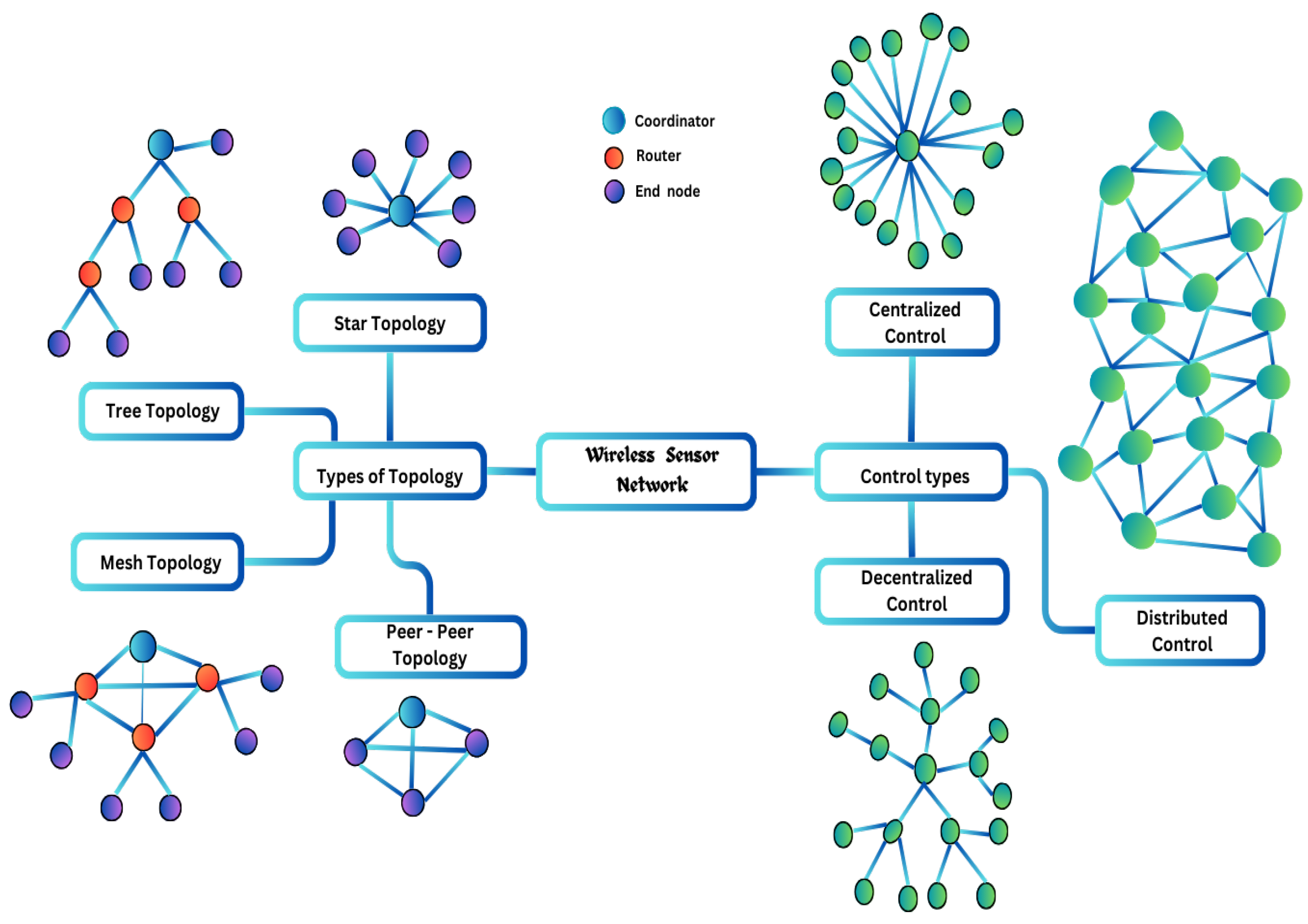


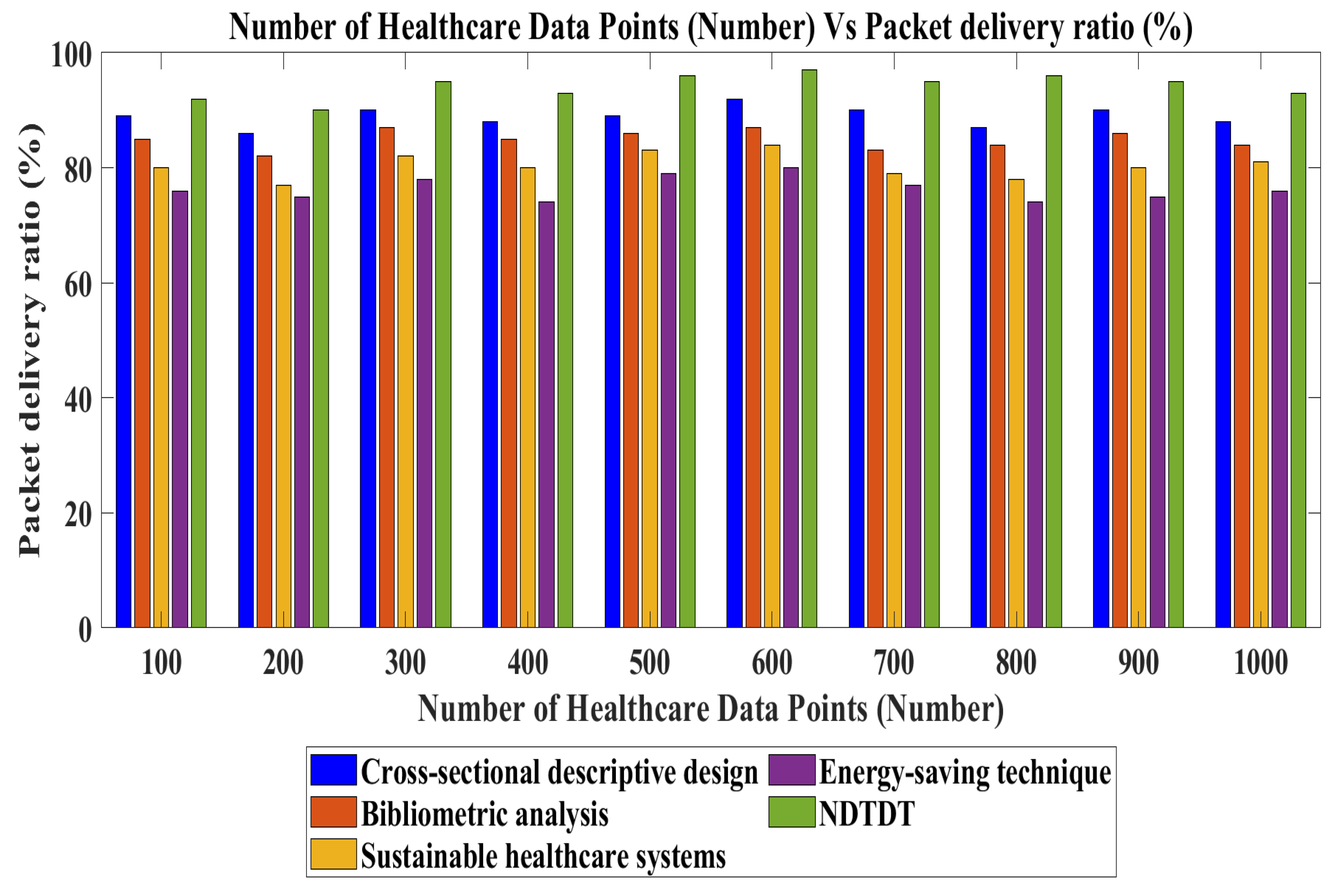
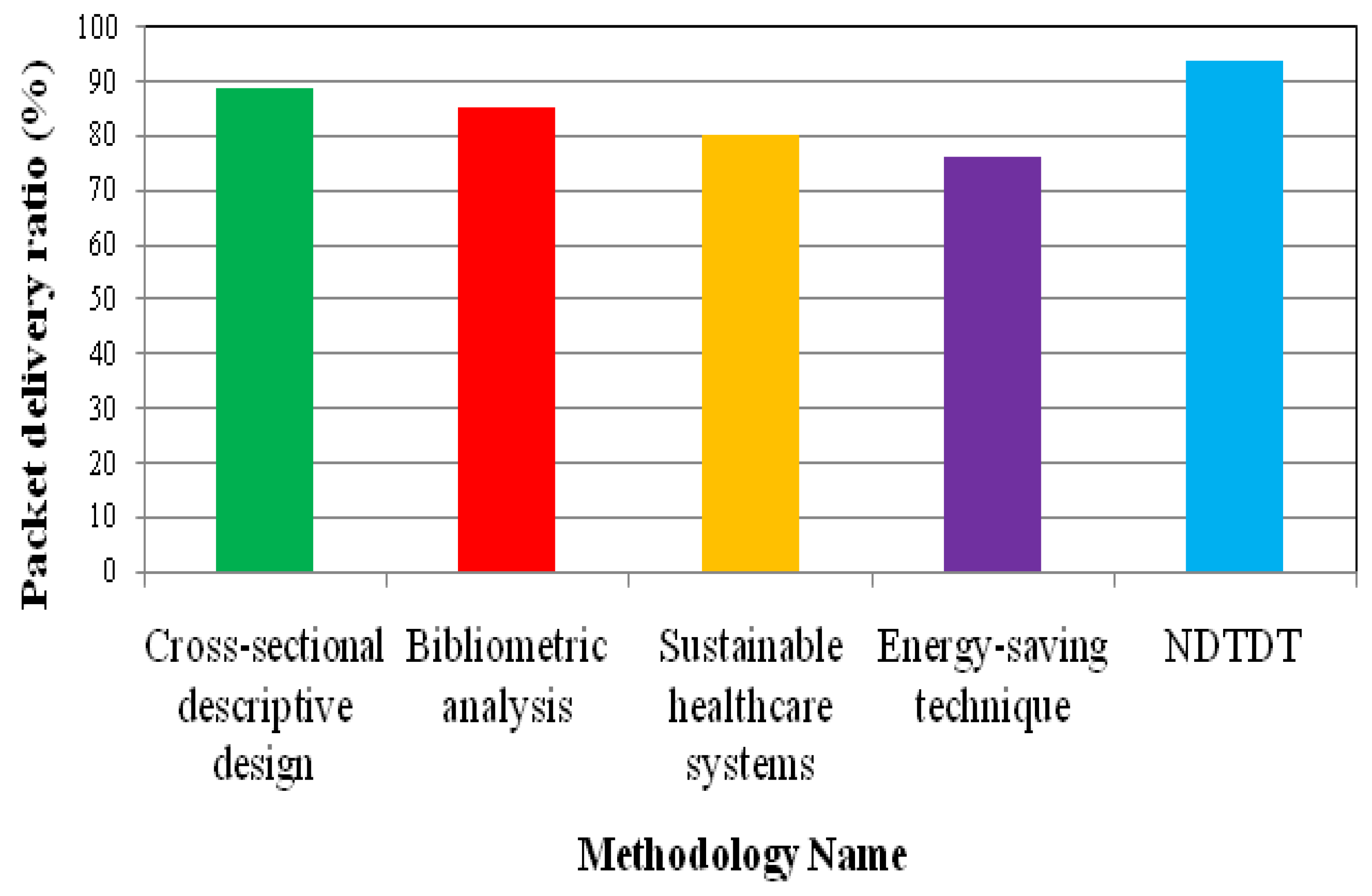

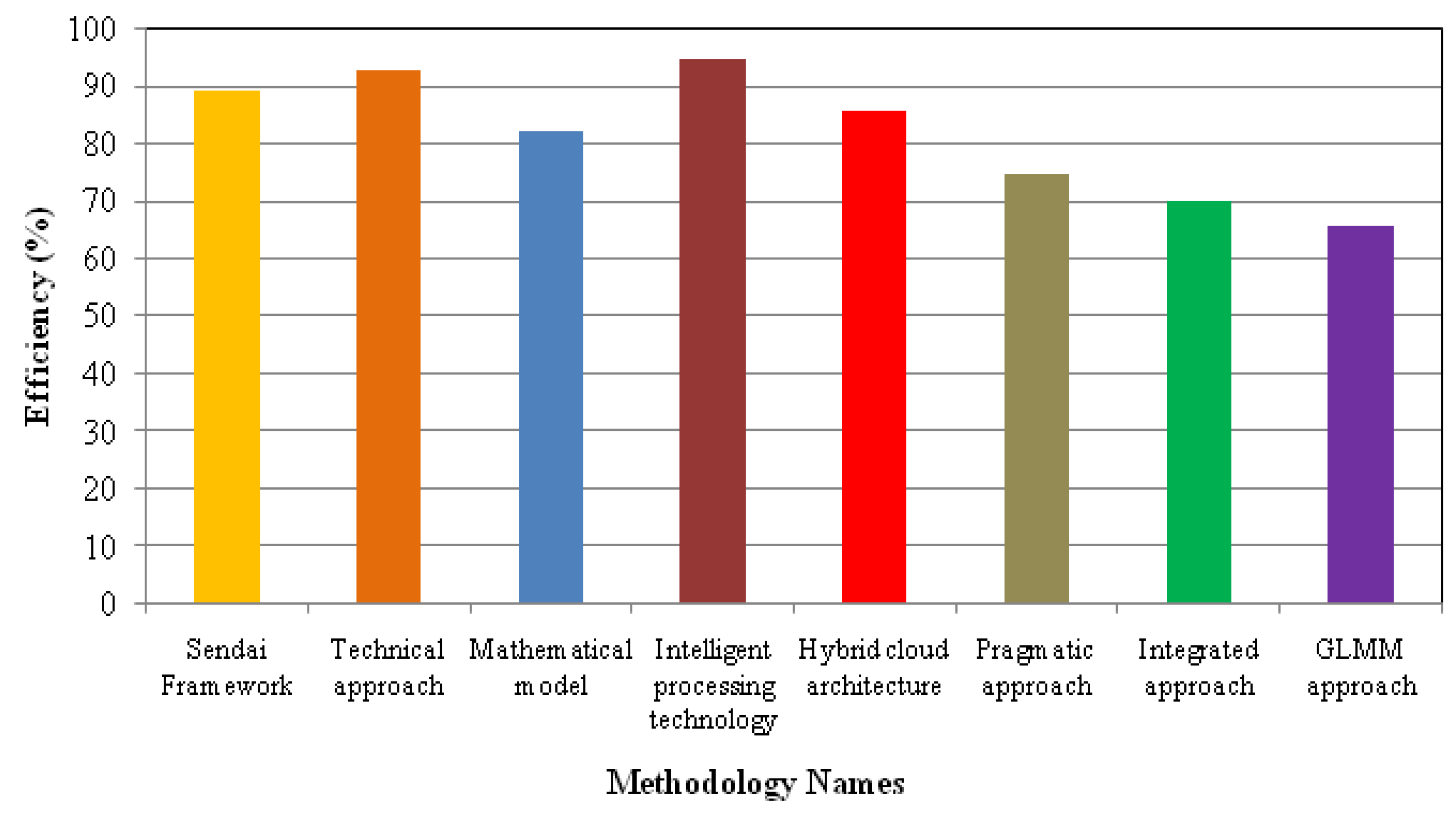
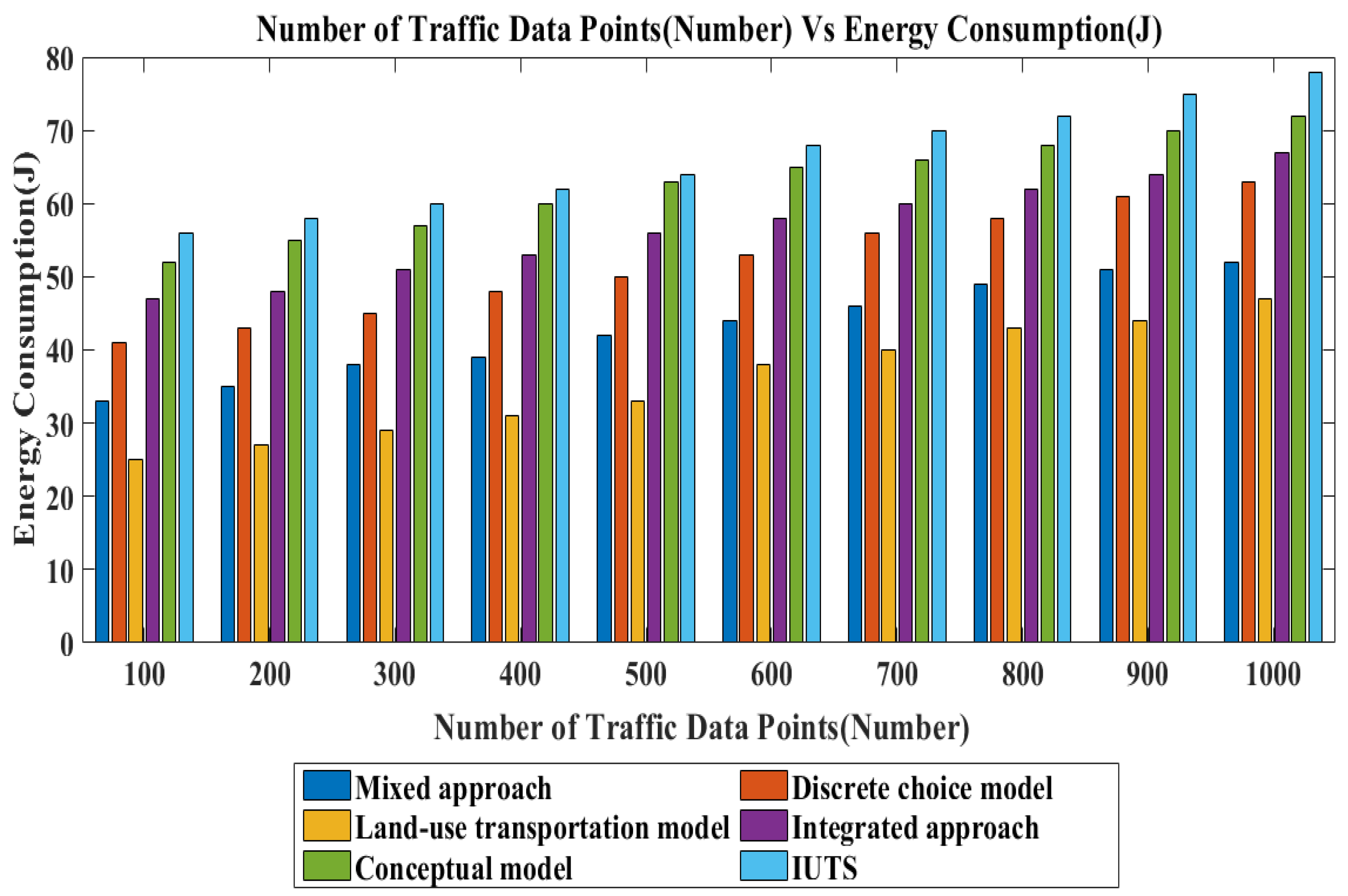
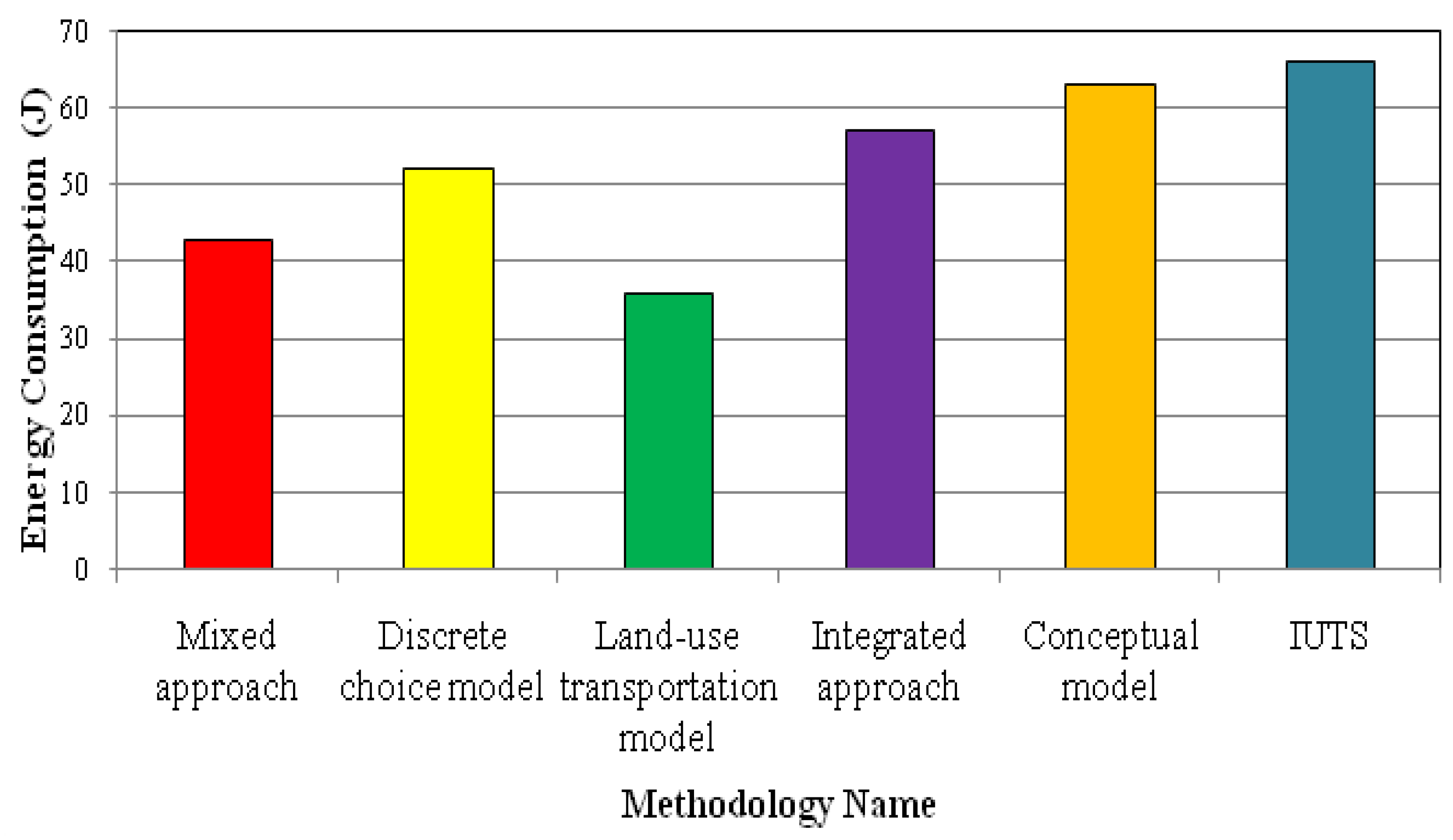
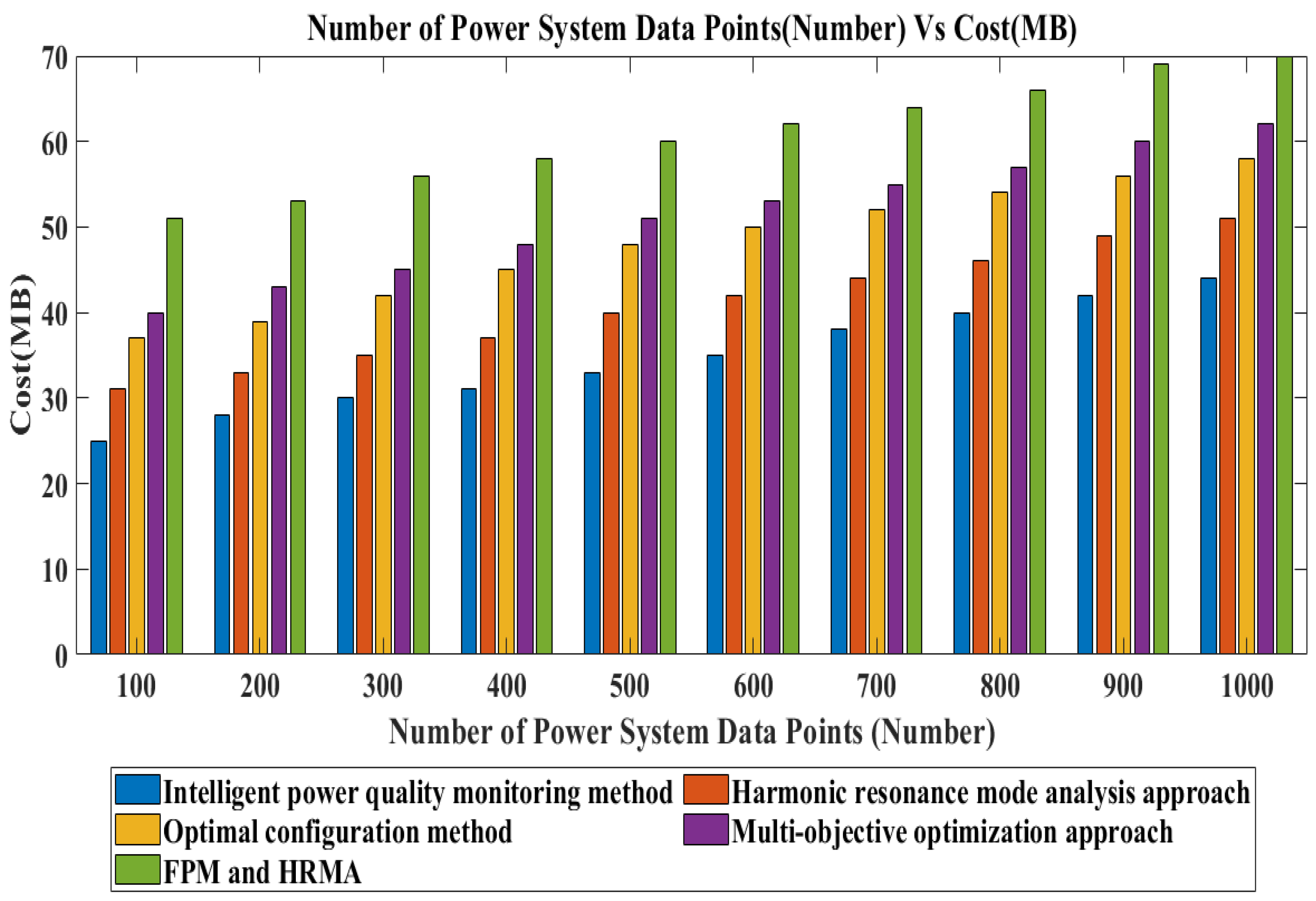
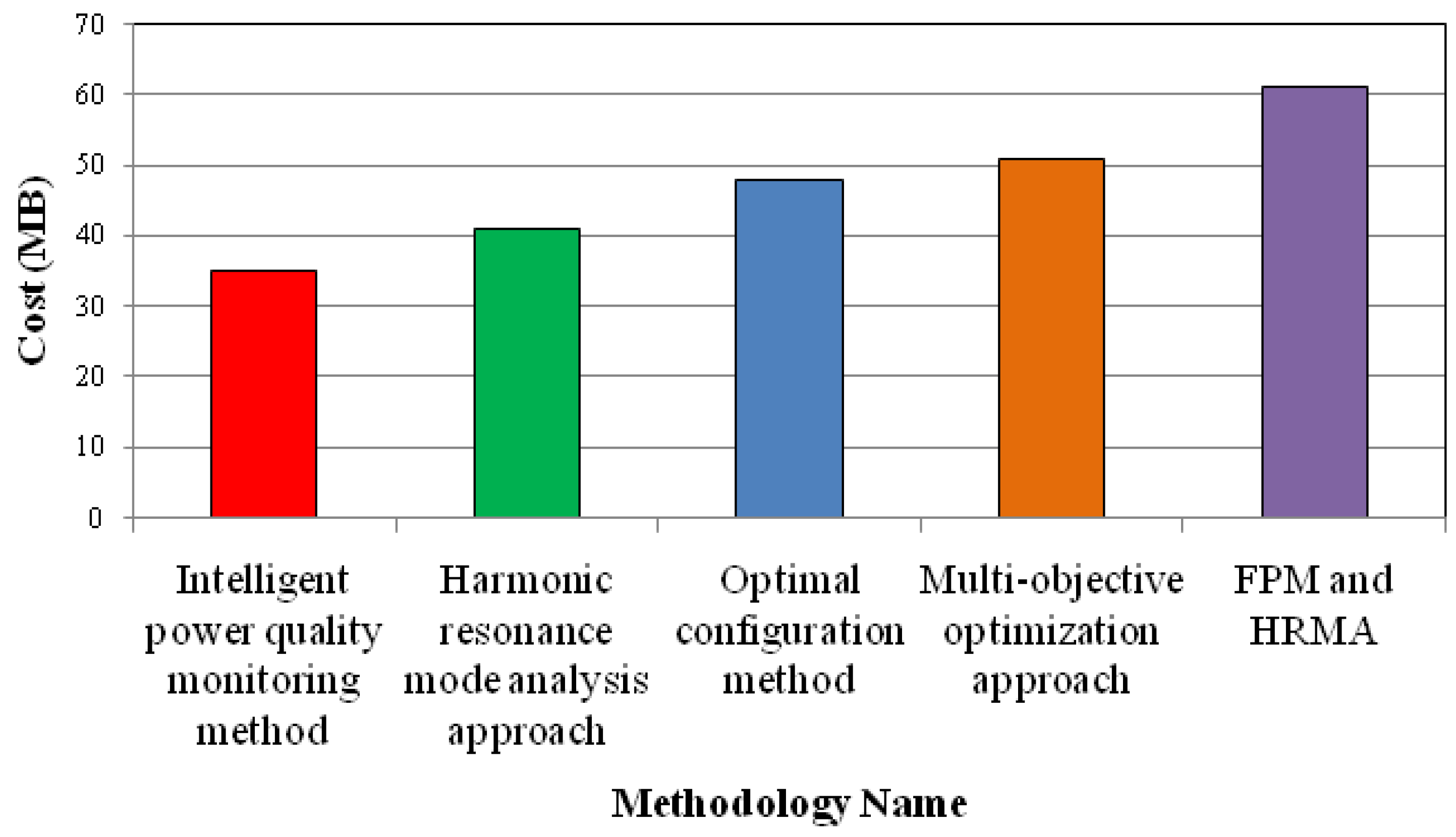
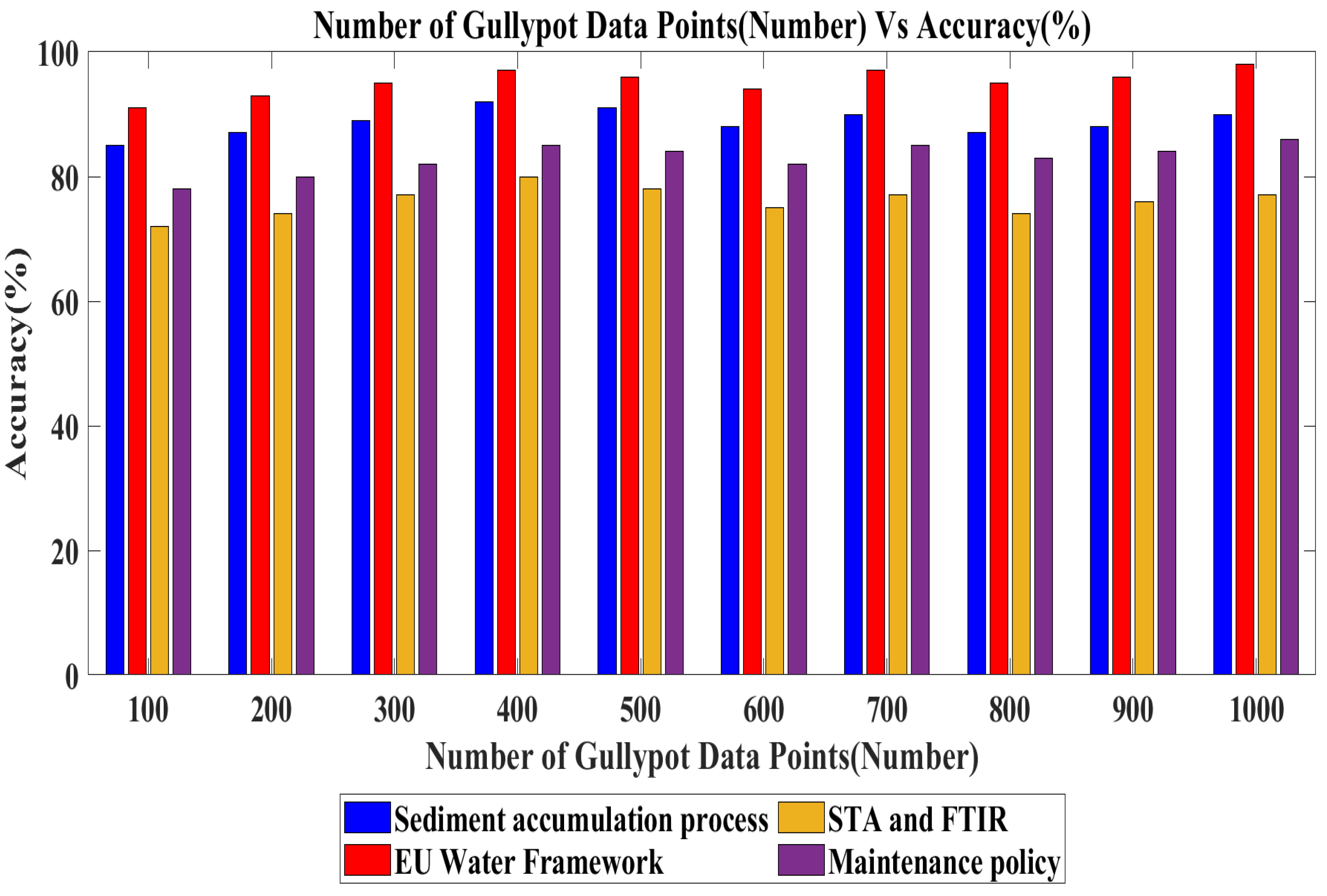
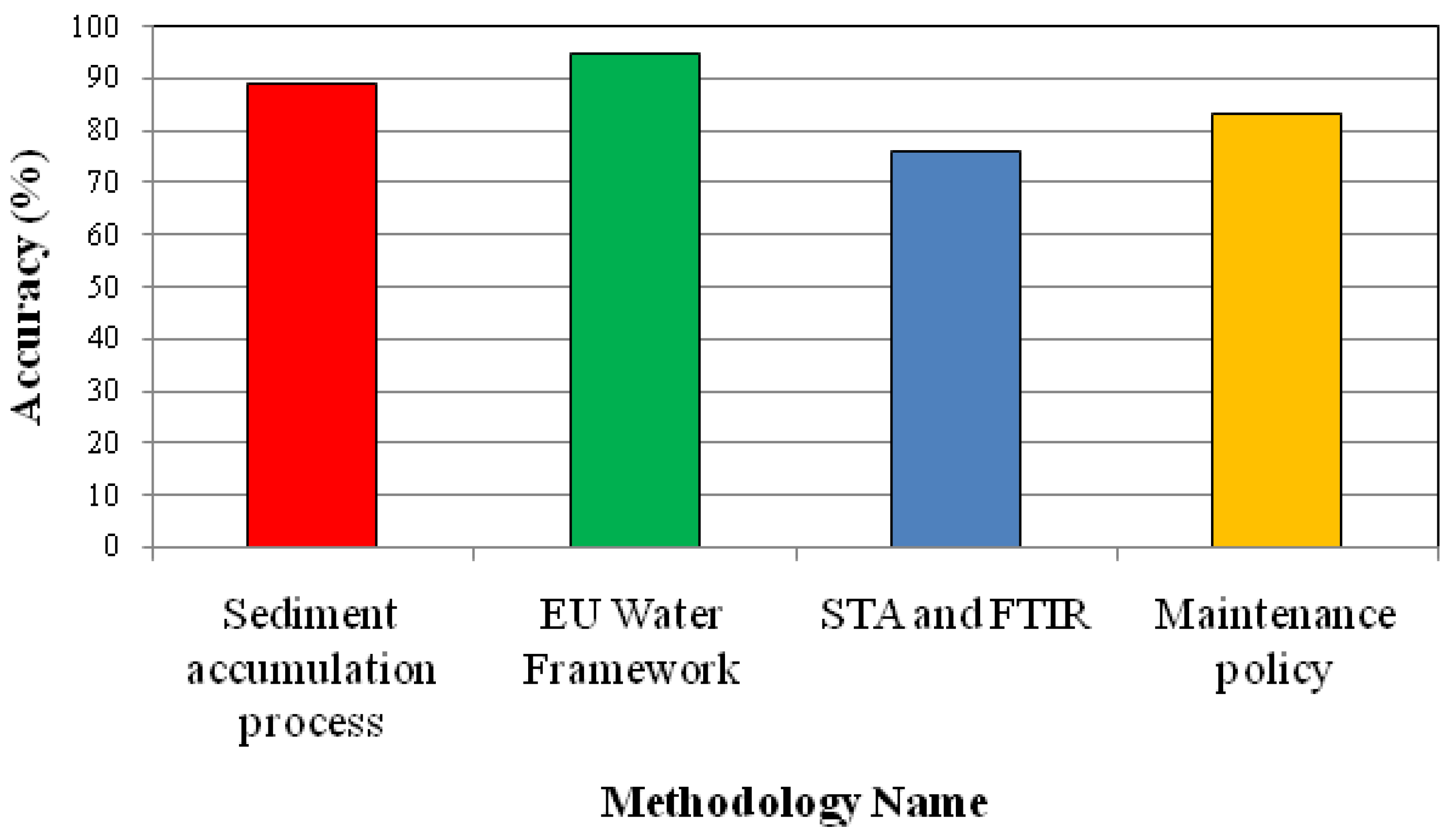
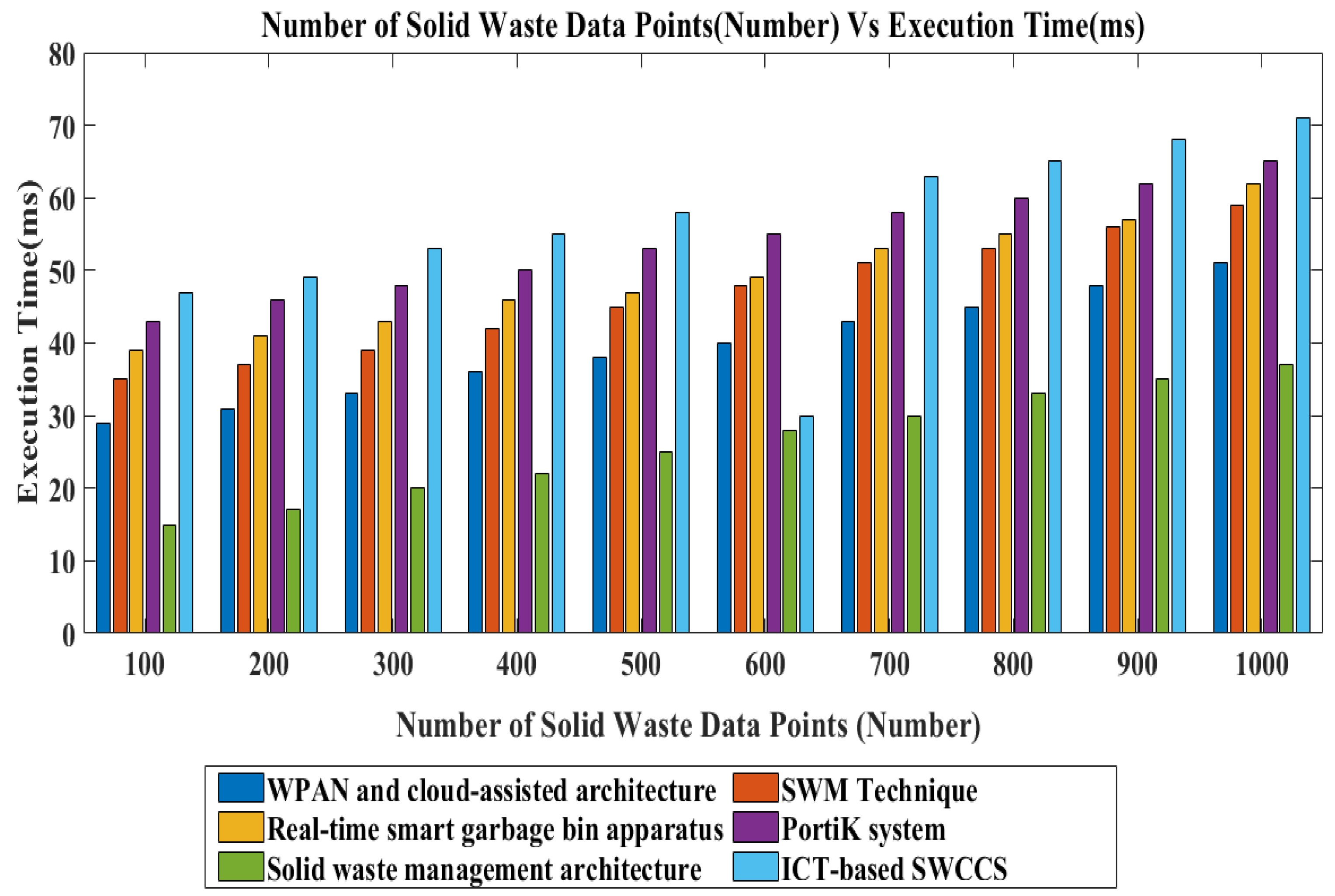
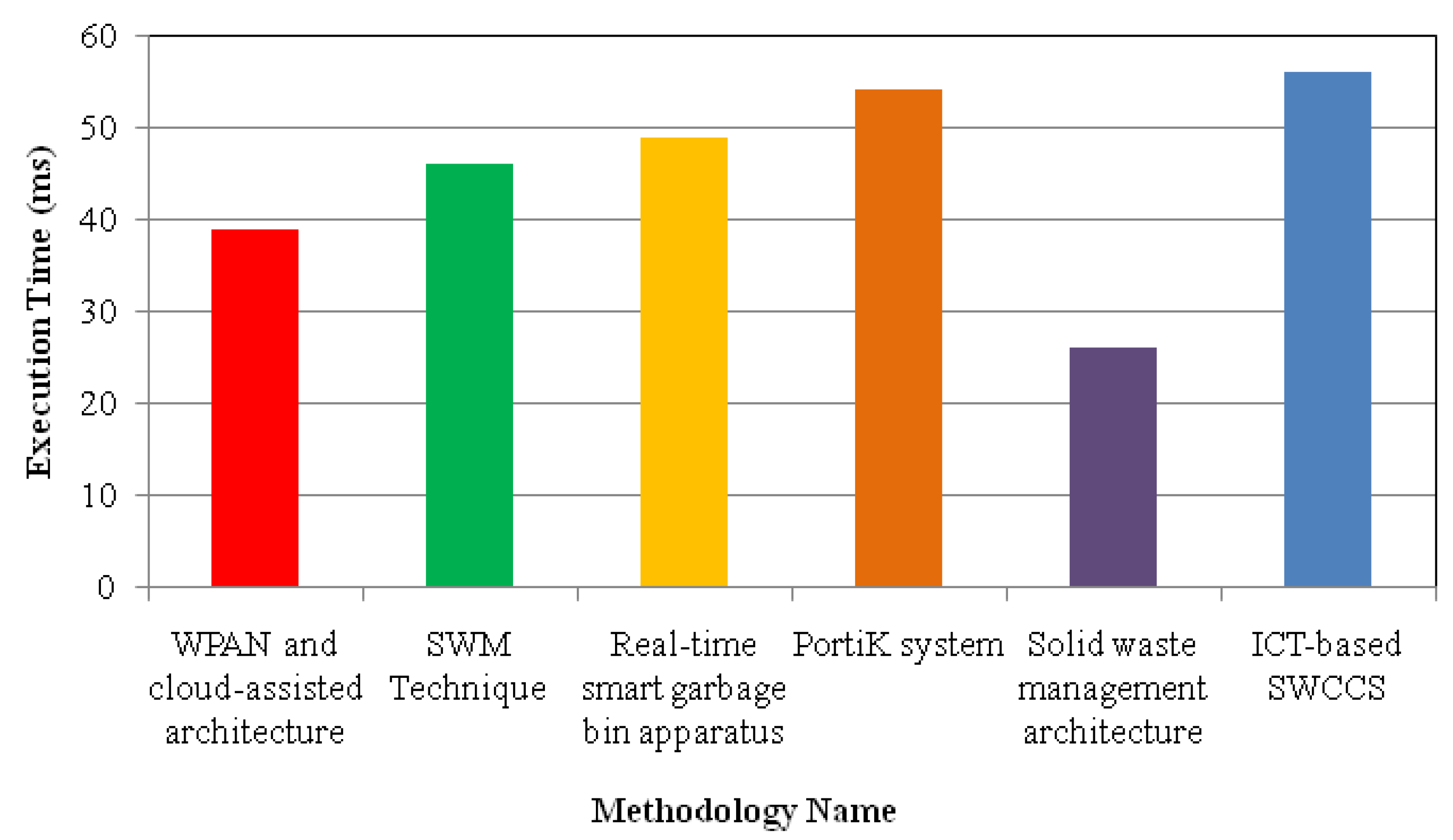
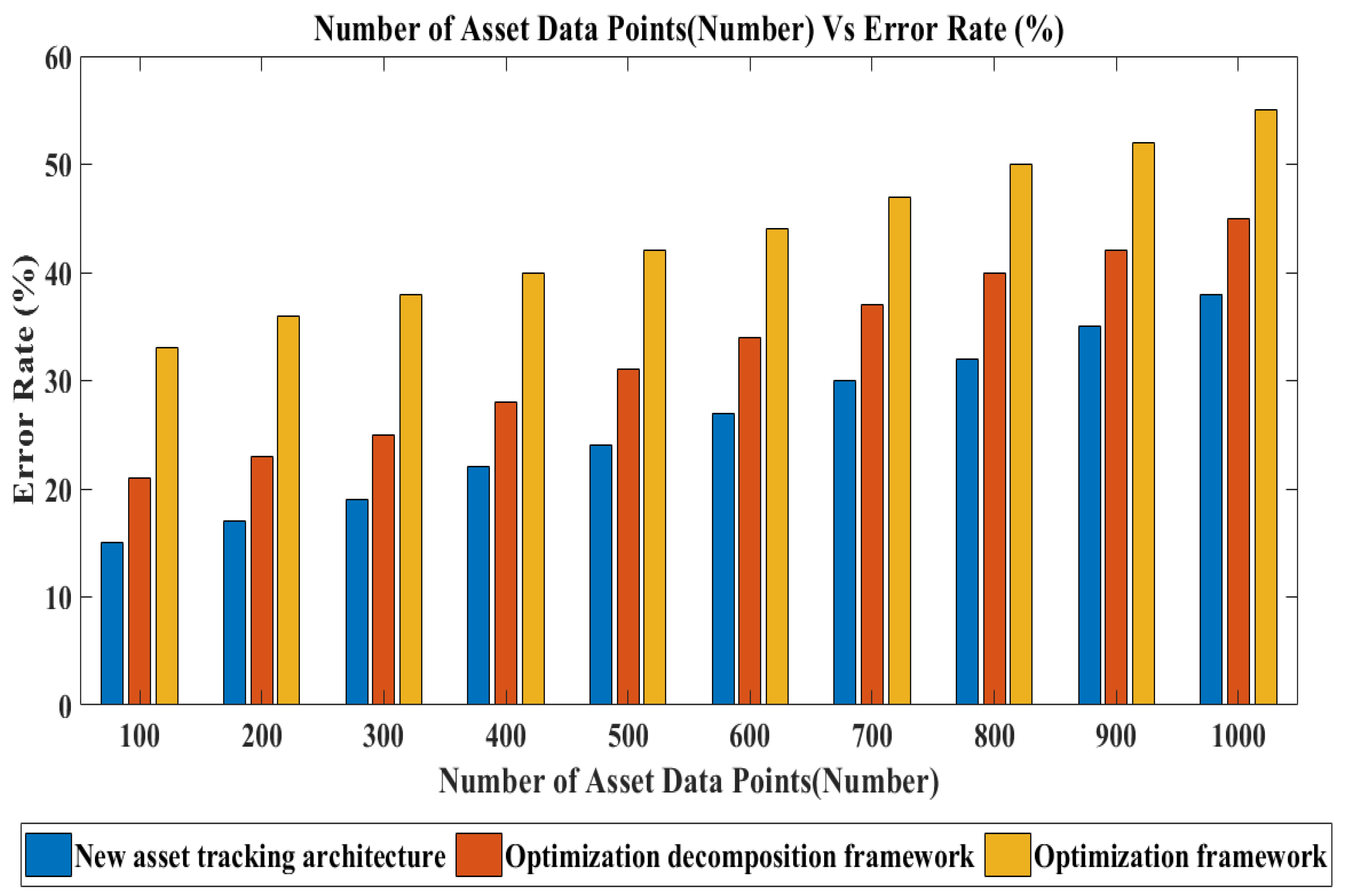
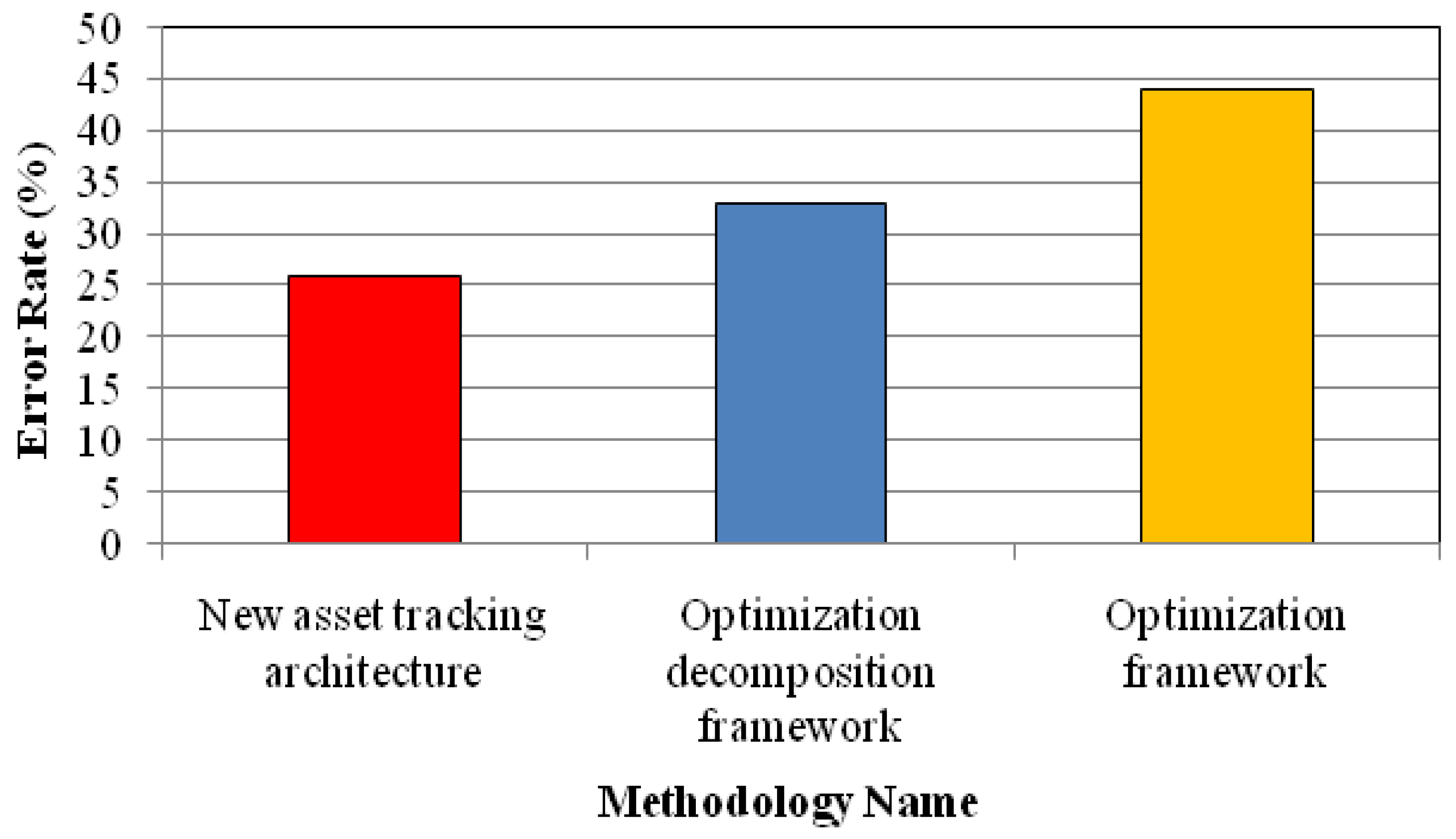

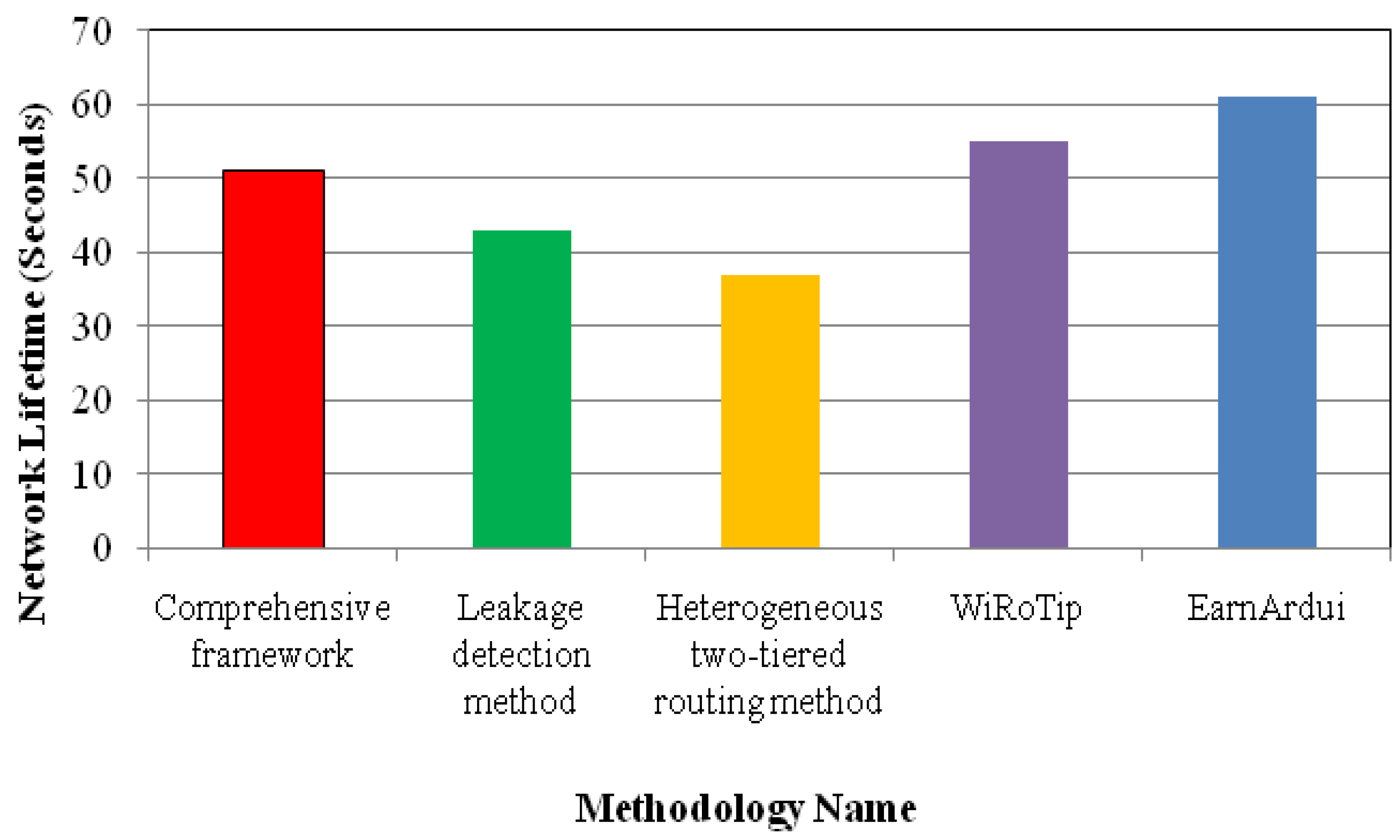
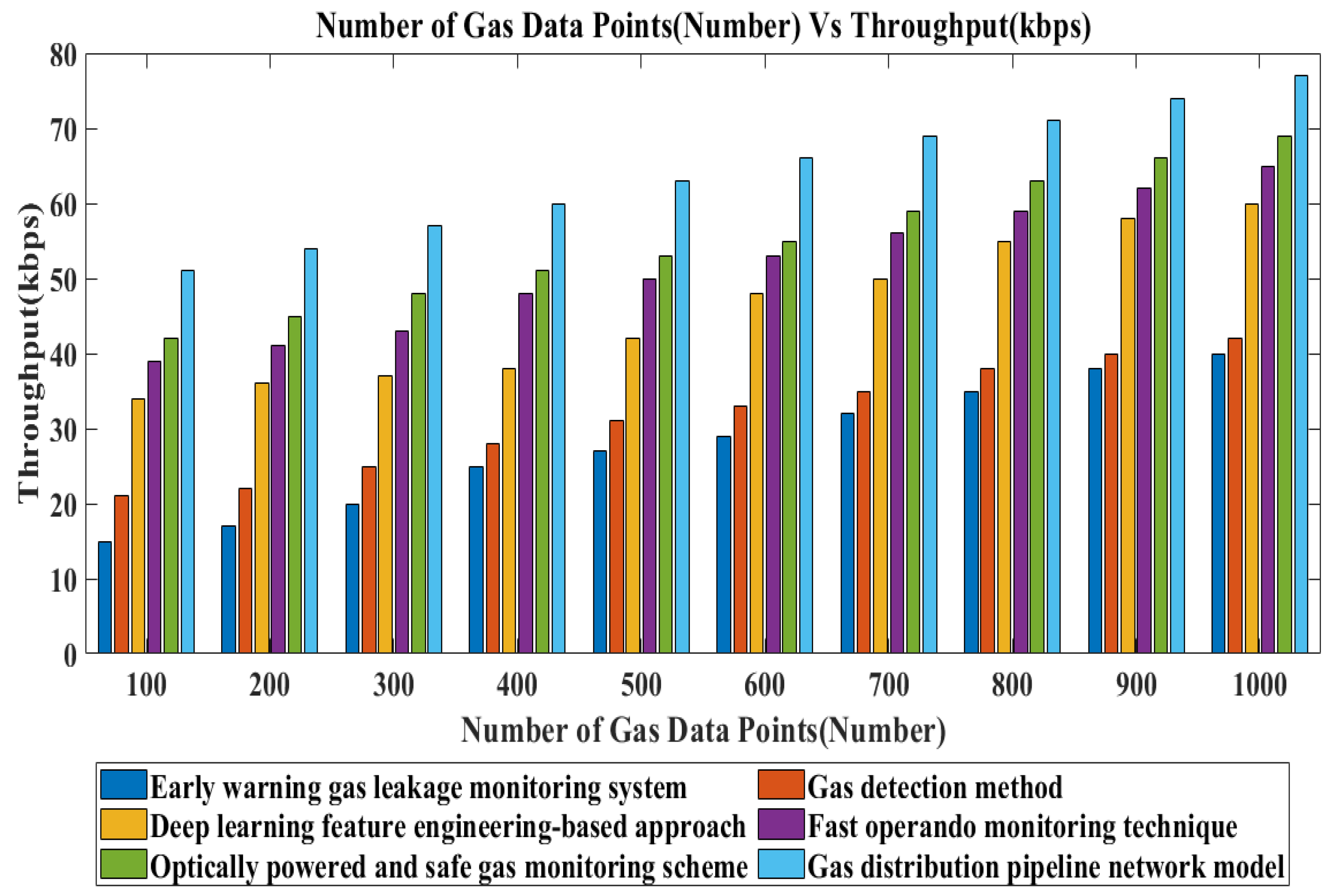

| Performance Metric | Acronym | Brief Description |
|---|---|---|
| Energy Consumption | The amount of energy consumed by the network or system during operation. | |
| Network Lifetime | The duration a network can function effectively before the nodes lose their energy. | |
| End-to-End Delay | The total time a data packet travels from the source to the destination. | |
| Efficiency | E | The effectiveness of a system in utilizing resources to achieve its goals. |
| Routing Overhead | The additional network resources required for maintaining and managing routing information. | |
| Throughput | T | The rate at which data are successfully transmitted over the network. |
| Computation Cost | The total cost associated with computational resources used in processing tasks. | |
| Computational Overhead | The extra computational resources required beyond the basic operation. | |
| Reliability | R | The ability of the system to perform consistently under specified conditions. |
| Loss Rate | The percentage of data packets lost during transmission. | |
| Execution Time | The total time to complete a specific task or process. | |
| Accuracy | The number of data points delivered to the base station. | |
| Error Rate | The number of data points mistakenly delivered to the total number of data points sent. |
| Ref. | Methodology | Objectives | Applications | Merits | Demerits | Monitoring Scheme | Attributes | Parameters |
|---|---|---|---|---|---|---|---|---|
| [12] | Intelligent power quality monitoring method | To handle the power quality event | Industrial drive application | Energy consumption was minimized by 68 J | Computational cost was not reduced | IoT cloud-based power quality monitoring | Current Angle, Voltage Angle, Three-Phase CMU4 | Energy consumption, Computational cost |
| [13] | Harmonic resonance mode analysis approach | To determine the optimal locations of PQMs | Industrial application | Network lifetime was higher by 60 s | The loss rate was not minimized | Power quality monitoring | Three-Phase VMU1, Three-Phase CMU3 | Energy consumption, Network lifetime, Delay |
| [14] | Optimal configuration method | To ensure the observability of all state variables | Power system monitoring | The cost was minimized by 30 MB | Lesser reliability | Power quality monitoring | time, sqNum, stnum, state cb | Energy consumption, Network lifetime, Efficiency |
| [15] | Multiobjective optimization approach | To allocate power quality monitors | Power system monitoring | Reliability was improved by 90% | Loss was not minimized | Power quality monitoring | Current Angle, Voltage Angle | Energy consumption, Network lifetime, Efficiency |
| [16] | FPM and HRMA | To reduce power quality monitoring | Power system monitoring | Efficiency was increased by 80% | Failed to minimize power quality disturbance | Power quality monitoring | Three-Phase VMU1 | Delay, Cost |
| [17] | Sediment accumulation process | To provide a proactive solution | Gully pot monitoring application | Cost was reduced by 50 MB | Throughput was not increased | Gully pot monitoring | Gully Omissions, Gully Cleaned | Efficiency, Cost |
| [18] | EU Water Framework | To quantify sediment scour | Gully pot monitoring application | Energy consumption was minimized by 42 J | Lower reliability | Gully pot monitoring | Gully Repairs, Traffic-Sensitive | Energy consumption, Network lifetime, Efficiency |
| [19] | STA and FTIR | To detect and quantify TWP | Gully pot monitoring application | Delay was lower by 60 ms | Complexity was not minimized | Gully pot sediments | Gully omissions, Gully Cleaned | Energy consumption, Delay |
| [20] | Maintenance policy | To determine a maintenance policy | Gully pot monitoring application | Throughput was higher by 70 kbps | Energy consumption was not minimized | Gully pot monitoring | Traffic Sensitive, Gully Inspected | Efficiency, Delay |
| [21] | Mixed approach | To assess the alignment of three urban transport planning measures | Transport application | Energy consumption was lower by 32 J | Computational complexity was reduced | Transport planning monitoring | Time, Date, Day of the week | Energy consumption, Delay, Cost |
| [22] | Discrete choice model | To determine the main user characteristics | Transport application | Higher reliability by 80% | Energy consumption was not minimized | Urban and periurban zones | Time, Date, Day of the week, Car Count, Bike Count, | Energy consumption, Cost |
| [23] | Land-use transportation model | To assess energy and livability assessment | Transport application | Throughput was higher by 65 kbps | Delay was not minimized | Land use-transport model | Time, Date, Total, Traffic Situation | Efficiency, Throughput |
| [24] | Integrated approach | To improve mobility | Transport application | Cost was decreased by 45 MB | Network lifetime was enhanced | Transport system | Time, Date, Total, Traffic Situation | Efficiency, Throughput, Cost |
| [25] | Conceptual model | To explain the connections between transportation and health | Transport application | Network lifetime was improved by 63 s | The complexity level was higher | Transport system | Time, Date, Total, Truck Count | Energy consumption, Delay, Cost |
| [26] | IUTS | To enhance the traveling standards | Transport application | Delay was lower by 39 ms | Efficiency was not improved | Transport system | Time, Date, Total, Traffic Situation | Energy consumption, Network Lifetime |
| [27] | Sendai Framework | To find DRM and DRR | Disaster application | Cost was minimized by 34 MB | Reliability was not improved | Disaster Risk Monitor Location, | Latitude, Longitude, Disaster No. | Energy consumption, Network Lifetime |
| [28] | Technical approach | To measure the risk level | Disaster application | Network lifetime was enhanced by 70 s | The delay was not minimized | Disaster Risk Monitor | Disaster Type, Disaster Subtype, Start Year, Start Month, Start Day | Energy consumption, Network Lifetime and Cost |
| [29] | Mathematical model | To measure disaster emergency | Disaster application | Mean squared error was minimized by 0.1074 | Computational cost was not decreased | Disaster Risk Monitor | Disaster Group, Disaster Subgroup | Reliability and Network Lifetime |
| [30] | Intelligent processing technology | To maintain emergency management of urban fires | Emergency management application | Efficiency was higher by 87% | Energy consumption was minimized | Emergency management | Total Damage, CPI, Admin Units, Entry Date, Last Update | Cost, Delay |
| [31] | Hybrid cloud architecture | To support coordinated emergency management | Emergency management application | Delay was lower by 46 ms | The cost was not minimized | Emergency management Monitoring | Admin Units, Entry Date, Last Update | Efficiency, Reliability |
| [32] | Pragmatic approach | To measure disaster emergency | Disaster application | The error rate was minimized by 15% | Cost was higher | Disaster Risk Monitor | Disaster Group, Disaster Subgroup | Latency and Network Lifetime |
| [33] | Integrated approach | To handle emergency events | Emergency management application | Energy efficiency was higher by 78% | Computational complexity was not minimized | Emergency management Monitoring | Injured No. Affected No | Cost, Efficiency |
| [34] | GLMM | To measure sediment bed levels | Gully pot monitoring application | Error rate was minimized by 22% | Reliability was not improved | Gully pot monitoring | Application Gully omissions, Gully Cleaned | Energy consumption |
| [35] | Cross-sectional descriptive design | To improve healthcare quality | Healthcare application | Energy consumption was minimized by 67 J | The delay was not minimized | Healthcare monitoring | Age, gender, duration of experience, department, and profession | Energy consumption, Efficiency |
| [36] | Bibliometric analysis | To improve the quality of diagnosis | Healthcare application | Delay was lower by 30 ms | Healthcare data, Transmission analysis was not performed | Healthcare monitoring | Medical condition, Insurance provider, room number | Energy consumption, reliability |
| [37] | Sustainable healthcare systems | To identify the moderating factor | Healthcare application | Energy consumption was minimized by 70 J | User satisfaction was not enhanced | Healthcare monitoring | Age, gender, blood group | Network Lifetime, Delay |
| [38] | Energy-saving technique | To assess of pulse rate, guaranteeing optimum energy consumption | Healthcare application | 98% reduction in transmission capacity | Energy saving was performed | Healthcare monitoring | Age, blood group, hospital, | Energy consumption, Network Lifetime |
| [39] | NDTDT | To prevent overloaded dissemination and augment immediate, swift message delivery | Healthcare application | Delivery rate was increased by 0.91% and 0.932% | Energy consumption was not reduced | Healthcare monitoring | Doctor, hospital, age, blood group, | Network Lifetime, Delay |
| [40] | Big data handling mechanism | To explain big data related to healthcare applications | Healthcare application | Overhead was minimized by 11.67 ms | Energy consumption was not reduced | Healthcare monitoring | Age, gender, department, and profession | Cost, Throughput |
| [41] | Early warning gas leakage monitoring system | To achieve real-time monitoring and early warning reliably | Gas monitoring application | Computational cost was lower by 41 MB | Energy consumption was minimized | Gas monitoring application | Sensor number, latitude, longitude, methane concentration, and suspected leakage point | Cost |
| [42] | Gas detection method | To improve sensor response time | Gas monitoring application | Delay was lower by 42 ms | Complexity was not reduced | Gas monitoring application | Time, Data type | Energy consumption, Network Lifetime |
| [43] | Deep learning feature engineering-based approach | To accurately identify the working status of gas sensors | Gas monitoring application | Energy consumption was reduced by 62 J | Complexity was not minimized | Gas monitoring application | Time, Data type | Delay, Cost |
| [44] | Fast operando monitoring technique | To handle the issue of various gas sensors in commercial batteries | Gas monitoring application | Network lifetime was increased by 68 s | Energy consumption was higher | Gas monitoring application | Time, Data type | Efficiency, throughput |
| [45] | Optically powered and safe gas monitoring scheme | To achieve power delivery and information transmission | Gas monitoring application | Time was reduced by 120 ms | Computational cost was increased | Gas monitoring application | Time, Data type | Network Lifetime, Cost |
| [46] | Gas distribution pipeline network model | To visualize the status of the bins | Gas monitoring application | Delay was minimized by 45 ms | Time consumption was not minimized | Gas monitoring application | Time, Data type, unit data type | Cost, Efficiency |
| [47] | WPAN and cloud-assisted architecture | To monitor solid waste | Solid waste monitoring | Computational cost was lower by 30 MB | Real-time monitoring was not performed | Solid waste monitoring | City name, income-id, solid waste laws and regulations | Network Lifetime, Delay |
| [48] | SWM Technique | To compute pollution parameters | Solid waste monitoring | Reliability was improved by 88% | Energy consumption was not minimized | Solid waste monitoring | Solid waste country, Population number of people | Efficiency, Cost |
| [49] | Real-time smart garbage bin apparatus | To reduce traffic jams | Solid waste monitoring | Cost was lower by 48 MB | Energy consumption was higher | Solid waste monitoring | Special waste tons year | Latency, Delay |
| [50] | PortiK system | To provide real-time solid waste collection | Solid waste monitoring | Energy efficiency was improved by 88% | Waste management was not performed | Solid waste monitoring | Population number of people, Solid waste country | Network Lifetime, Delay |
| [51] | Solid waste management architecture | To ensure an efficient waste management process | Solid waste monitoring | Accuracy was improved by 95.3125% | Data tracking was not performed | Solid waste monitoring | Waste collection coverage, total percent of geographic area | Delay, Cost |
| [52] | ICT-based SWCCS | To address waste-gathering issues | Solid waste monitoring | Network lifetime was higher by 66 s | Waste gathering issues were not addressed | Solid waste monitoring | Waste treatment compost percent | Reliability |
| [53] | SWC route optimization model | To improve collection efficiency | Solid waste monitoring | Efficiency was improved by 26.08% | Cost was not lower | Solid waste monitoring | Waste collection coverage urban percent of households | Efficiency, Cost |
| [54] | Comprehensive Framework | To maintain a high-quality of service | Water Pipeline Monitoring | Throughput was higher by 52 kbps | Failed to perform water pipeline Monitoring | Water Pipeline Monitoring | Time, Month, Year | Throughput, Time |
| [55] | Leakage Detection Method | To enhance the precision | Water Pipeline Monitoring | Accuracy rate was improved by 92% | Recall was not considered | Water Pipeline Monitoring | Time, Month, Year | Energy Consumption, Latency |
| [56] | Heterogeneous two-Tiered routing method | To minimize power consumption | Water Pipeline Monitoring | Cost was minimal by 39 MB | Water pipeline monitoring time was not minimized | Water Pipeline Monitoring | Time, Month, Year | Energy Consumption, Network Latency, Delay |
| [57] | Wirotip | To reduce power consumption | Water Pipeline Monitoring | Computational cost was lower by 42 MB | Energy consumption was not minimized | Water Pipeline Monitoring | Time, Month, Year | Efficiency, Throughput |
| [58] | Earnardui | To measure water pipeline | Water Pipeline Monitoring | Energy efficiency was higher by 77% | Energy consumption was minimized | Water Pipeline Monitoring | Time, Month, Year | Efficiency, Cost |
| [59] | New asset tracking architecture | To maximize smart phone battery lifetime | Commercial Asset Tracking Application | Time was lower by 26 ms | Tracking was not performed | Tracking Monitoring | Sz State, Sz Date, Sz Year, Sz Meth | Energy Consumption, Network Latency |
| [60] | Optimization decomposition framework | To minimize energy consumption | Commercial Asset Tracking | Application cost was lower by 47 MB | Cost tracking was not minimized | Tracking Monitoring | Asset Id, Asset Value | Energy Consumption, Network Latency, Delay |
| [61] | Optimization framework | To measure critical levels of the hospital locations | Commercial Asset Tracking Application | Overhead was lower by 33 ms | Cost was increased | Tracking Monitoring | Dist, Sz State | Energy Consumption, Network Latency, Delay |
| Ref. | Method Name | Objective | Sensor Type | Network Type | Topology | EC | NL | E | Delay | T | LR | R | ET | Cost | CO | Limitations |
|---|---|---|---|---|---|---|---|---|---|---|---|---|---|---|---|---|
| [12] | Intelligent power quality method | Efficient power quality event data logging management | Power meter | Centralized | Mesh |  |  |  |  |  | Computational cost not minimized | |||||
| [13] | Harmonic resonance mode analysis | Monitoring in severe conditions via integer optimization | RMS Voltage and Current | Decentralized | Star |  |  |  |  |  |  | Loss rate not reduced | ||||
| [14] | Optimal configuration method | Ensures observability of state variables | Light and Motion sensors | Decentralized | P2P |  |  |  |  |  | Reliability not increased | |||||
| [15] | Multi-objective optimization approach | Min load monitoring, min ambiguity in PQ monitors | Ammeter, cameras | Centralized | Tree |  |  |  |  |  | Loss rate not minimized | |||||
| [16] | FPM and HRMA | Detect PQ disturbances via best install nodes | RMS Voltage and Current | Centralized | Mesh |  |  |  |  | PQ disturbance not reduced |
| Ref. No. | Method Name | Objective | Sensor Type | Network Type | Topology | EC | NL | E | Delay | RO | T | Cost | Limitations |
|---|---|---|---|---|---|---|---|---|---|---|---|---|---|
| [17] | Sediment accumulation process | Assess net accumulation rates | Acoustic | Distributed | Mesh |  |  | Throughput level not improved | |||||
| [18] | EU Water Framework | Reduce sediment scour impacts | Acoustic | Centralized | Tree |  |  |  |  |  | Reliability not improved | ||
| [19] | STA, FTIR, PARAFAC | Quantify TWP in sediments | Temperature | Distributed | Star |  |  |  | No reduction in computation | ||||
| [20] | Maintenance policy | Adaptive scheduling | Acoustic | Centralized | Tree |  |  |  |  | High energy during flooding |
| Ref.No. | Method Name | Objective | Sensor Type | Network Type | Network Topology | EC | NL | E | Delay | T | LR | R | Cost | Limitations |
|---|---|---|---|---|---|---|---|---|---|---|---|---|---|---|
| [21] | Mixed-method approach | Assess alignment between urban transport policies and citizen needs | GPS Devices | Centralized | Mesh |  |  |  |  | Mixed-method approach not reduced computational complexity | ||||
| [22] | Discrete choice model | Analyze discrete choice model via user and transport attributes | Multimedia mobile nodes | Decentralized | Cluster based |  |  |  | Did not minimize energy consumption | |||||
| [23] | Land-use transport model | Factors’ location-related decisions and travel behavior | Light, Temp., Acoustic Sensors | Centralized | Cluster based |  |  |  |  | Delay was not minimized | ||||
| [24] | Integrated approach | Integrate urban plan-making with public transport using PTAL | RFID, Hall sensors | Centralized | Mesh |  |  |  | Failed to improve network lifetime | |||||
| [25] | Conceptual model | Clarify connection between transport and health | Multimedia sensors | Centralized | Grid based |  |  |  |  | Did not increase efficiency between transport and health | ||||
| [26] | IUTS | Enhance travel standards and change travel behavior | Magneto-resistive sensors | Decentralized | Star |  |  |  |  |  | Did not minimize complexity level |
| Ref. No. | Method Name | Objective | Sensor Type | Network Type | Topology | EC | NL | E | Delay | RO | T | LR | R | Cost | Limitations |
|---|---|---|---|---|---|---|---|---|---|---|---|---|---|---|---|
| [27] | SFDRR | Adopt constructivist position to investigate historical emergence of DRM and DRR | Seismic sensors | Decentralized | Tree |  |  |  |  |  |  | Efficiency not improved by DRM and DRR | |||
| [28] | Positioning approach | Define mitigation zones to express perceived urban resilience in emergencies | Weather sensor | Centralized | Mesh |  |  |  |  |  | Reliability not improved | ||||
| [29] | Mathematical model | Assess crisis response in meteorological tragedies | Seismometer | Centralized | Tree |  |  | Delay not minimized | |||||||
| [30] | Intelligent processing technology | Address overcrowding and improve urban safety | Environmental sensor | Decentralized | Star |  |  |  |  |  | Computational cost not reduced | ||||
| [31] | Hybrid cloud architecture | Manage computing/storage in emergency scenarios | Weather sensor | Centralized | Mesh |  |  |  |  | Complexity not minimized | |||||
| [32] | Pragmatic approach | Need for proactive strategies for urban resilience | Seismometer | Decentralized | Star |  |  |  | Cost not minimized | ||||||
| [33] | Integrated approach | Enhance urban resilience and emergency response | Weather sensor | Centralized | Cluster |  |  |  |  | Complexity not reduced | |||||
| [34] | GLMM | Quantify solid accretion in gully pots | Environmental sensor | Centralized | Tree |  |  | Gully pots not reliably quantified |
| Ref. No. | Method Name | Objective | Sensor Type | Network Type | Topology | EC | NL | E | Delay | RO | T | LR | R | ET | Cost | CO | Limitations |
|---|---|---|---|---|---|---|---|---|---|---|---|---|---|---|---|---|---|
| [35] | Cross-sectional descriptive design | Target all healthcare professionals who interact with e-health applications and programmes | Video, Acoustic, RFID sensors | Centralized | Star |  |  |  |  | Delay using cross-sectional approach was not minimized | |||||||
| [36] | Initial bibliometric analysis | Analyze data for healthcare applications in efficient way | EMG, EEG, ECG, EOG sensors | Decentralized | Star |  |  |  |  |  |  |  | Healthcare data transmission analysis was not efficient | ||||
| [37] | Sustainable healthcare system | Understand moderating effects of personal features on perceived value and user satisfaction | Environmental, physiological sensors | Centralized | Star |  |  |  |  | User satisfaction was not improved | |||||||
| [38] | Energy-saving technique | Increase battery capability of IoT devices | Battery sensor | Centralized | Cluster-based |  |  |  |  |  |  |  | Reliability was not improved | ||||
| [39] | NDTDT | Ensure reliable message delivery to minimize errors due to discrete sensing intervals | Accelerometer, gyroscope | Centralized | Star |  |  |  |  |  | Network lifetime was not improved | ||||||
| [40] | Big data handling mechanism | Study big data related to healthcare applications | Thermometer | Centralized | Cluster-based |  |  |  |  |  | Energy consumption not reduced by big data mechanism |
| Ref. No. | Method Name | Objective | Sensor Type | Network Type | Topology | EC | NL | E | Delay | RO | T | LR | R | ET | Cost | CO | Limitations |
|---|---|---|---|---|---|---|---|---|---|---|---|---|---|---|---|---|---|
| [41] | Real-time and early-warning gas leakage monitoring system | Detect gas leaks in large-scale urban environments | GPS Sensor | Centralized | Hierarchical |  | Gas leak was not identified with minimum energy consumption | ||||||||||
| [42] | Gas detection development method | Improve safety and environmental protection measures | Gas Sensor | Decentralized | Cluster-based |  |  |  |  |  |  | Complexity was not reduced by gas detection development method | |||||
| [43] | Deep learning feature engineering-based approach | Identify sensor relationships for gas detection | Underground sensors | Decentralized | Star |  |  |  | Computational cost and complexity not reduced | ||||||||
| [44] | Fast operando monitoring method | Efficient and accurate gas emission detection | NDIR multi-gas sensors | Centralized | Mesh |  |  |  |  | Did not reduce energy consumption | |||||||
| [45] | Optically powered safe gas monitoring scheme | Detect gases in underground mines | LC-based optical transducers | Centralized | Mesh |  |  |  |  |  | Safe monitoring did not reduce computational cost | ||||||
| [46] | Gas distribution pipeline network model | Monitor actual gas distribution network | Pressure and temperature sensors | Centralized | Cluster-based |  |  |  |  |  |  | Time consumption for real monitoring not reduced |
| Ref. No. | Method Name | Objective | Sensor Type | Network Type | Network Topology | EC | NL | E | Delay | RO | T | LR | R | ET | Cost | CO | Limitations |
|---|---|---|---|---|---|---|---|---|---|---|---|---|---|---|---|---|---|
| [47] | WPAN and cloud-assisted architecture | Real-time monitoring via Xbee and internet | Customized sensor and coordinator | Decentralized | Tree |  |  |  |  |  | Real-time monitoring not energy-efficient | ||||||
| [48] | SWM | Assess ecological factors at dumpsites | NOx, SO2 sensors | Centralized | Star |  |  |  |  |  | Energy not optimized for ecological factors | ||||||
| [49] | Smart garbage bin apparatus | Urban solid waste administration | Weight Sensor | Decentralized | Mesh |  |  |  |  | No minimal energy consumption | |||||||
| [50] | PortiK system | Optimize waste operations | Short-range monitoring | Decentralized | Cluster-based |  |  |  | No real data monitoring integration | ||||||||
| [51] | Waste management architecture | Efficient data tracking | GSM tracking sensors | Centralized | Tree |  |  |  |  |  | High computational overhead | ||||||
| [52] | ICT-based WCCS | Address waste gathering issues | Proximity sensor | Decentralized | Mesh |  |  |  | Waste gathering issues not solved |
| Ref. No. | Method Name | Objective | Sensor Type | Network Type | Topology | EC | NL | E | Delay | RO | T | LR | R | ET | Cost | CO | Limitations |
|---|---|---|---|---|---|---|---|---|---|---|---|---|---|---|---|---|---|
| [54] | Comprehensive framework | Describe monitoring water pipeline techniques based on wired and wireless networks | Pressure, pH, and water level sensors | Centralized | Star |  |  |  |  | Pipeline monitoring was not performed with minimal energy consumption | |||||||
| [55] | Leakage detection method based on ML | Enhance accuracy and efficiency of leak detection in water pipelines | Pressure and water leak sensors | Distributed | Star |  |  |  |  |  | Accuracy improved but delay was not minimized | ||||||
| [56] | Heterogeneous two-tiered routing method | Improve network lifetime and efficiency of WSNs in pipeline monitoring | Pressure sensor | Centralized | P2P |  |  |  |  |  |  |  | Monitoring time was not minimized | ||||
| [57] | WSN node prototype termed WiRoTip | Ensure adequate design and functionality for pipeline applications | Acoustic sensor | Distributed | P2P |  |  |  |  | Energy consumption not reduced during monitoring | |||||||
| [58] | EarnArdui | Perform monitoring based on physical behavior | Pressure sensor, water level sensor | Centralized | Star |  |  |  |  | Energy minimized but network lifetime was not |
| Ref.No. | Method Name | Objective | Sensor Type | Network Type | Network Topology | EC | NL | E | Delay | RO | T | Cost | CO | Limitations |
|---|---|---|---|---|---|---|---|---|---|---|---|---|---|---|
| [59] | New asset tracking architecture | Track assets within construction sites | Hybrid RFID thermal sensors | Distributed | Mesh |  |  |  |  |  | Tracking was not carried out in accurate manner | |||
| [61] | Optimization framework | Efficient medical assets tracking in hospital environments | Pressure sensor | Distributed | Star |  |  |  |  | The cost of asset tracking was not reduced in hospital environment | ||||
| [60] | Optimization decomposition framework | Reduce energy consumption of sensor nodes with high estimation quality | Wireless sensor | Distributed | Mesh |  |  |  |  | The complexity level during quality estimation was not minimized |
Disclaimer/Publisher’s Note: The statements, opinions and data contained in all publications are solely those of the individual author(s) and contributor(s) and not of MDPI and/or the editor(s). MDPI and/or the editor(s) disclaim responsibility for any injury to people or property resulting from any ideas, methods, instructions or products referred to in the content. |
© 2025 by the authors. Licensee MDPI, Basel, Switzerland. This article is an open access article distributed under the terms and conditions of the Creative Commons Attribution (CC BY) license (https://creativecommons.org/licenses/by/4.0/).
Share and Cite
S., S.R.; Aburukba, R.; El Fakih, K. Wireless Sensor Networks for Urban Development: A Study of Applications, Challenges, and Performance Metrics. Smart Cities 2025, 8, 89. https://doi.org/10.3390/smartcities8030089
S. SR, Aburukba R, El Fakih K. Wireless Sensor Networks for Urban Development: A Study of Applications, Challenges, and Performance Metrics. Smart Cities. 2025; 8(3):89. https://doi.org/10.3390/smartcities8030089
Chicago/Turabian StyleS., Sheeja Rani, Raafat Aburukba, and Khaled El Fakih. 2025. "Wireless Sensor Networks for Urban Development: A Study of Applications, Challenges, and Performance Metrics" Smart Cities 8, no. 3: 89. https://doi.org/10.3390/smartcities8030089
APA StyleS., S. R., Aburukba, R., & El Fakih, K. (2025). Wireless Sensor Networks for Urban Development: A Study of Applications, Challenges, and Performance Metrics. Smart Cities, 8(3), 89. https://doi.org/10.3390/smartcities8030089





